Ondili Meumbo, a guided Safari
16 days – A condensed version packed with experiences of a classic yet high-quality Namibia tour, staying in fantastically located upscale accommodations that operate sustainably.


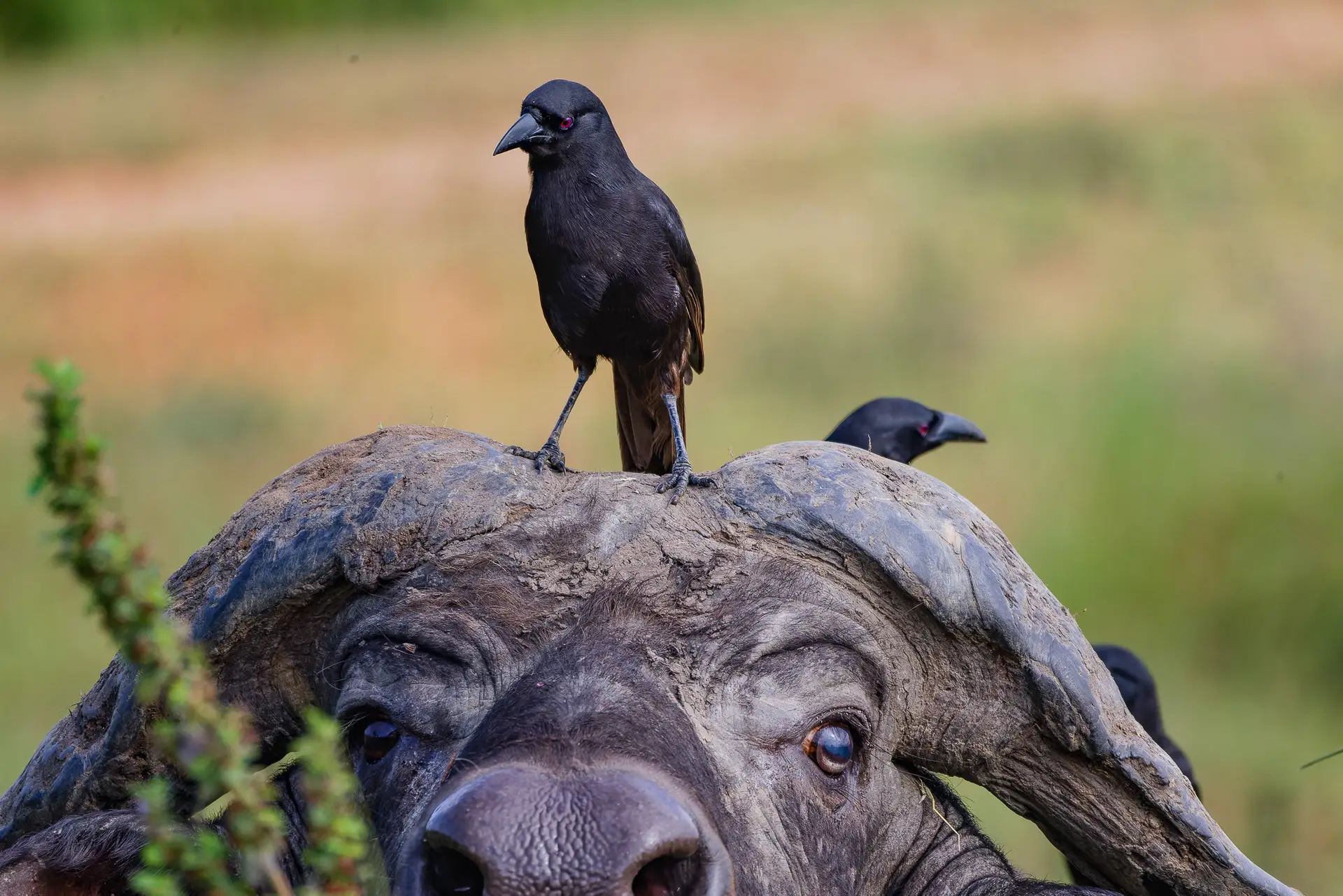
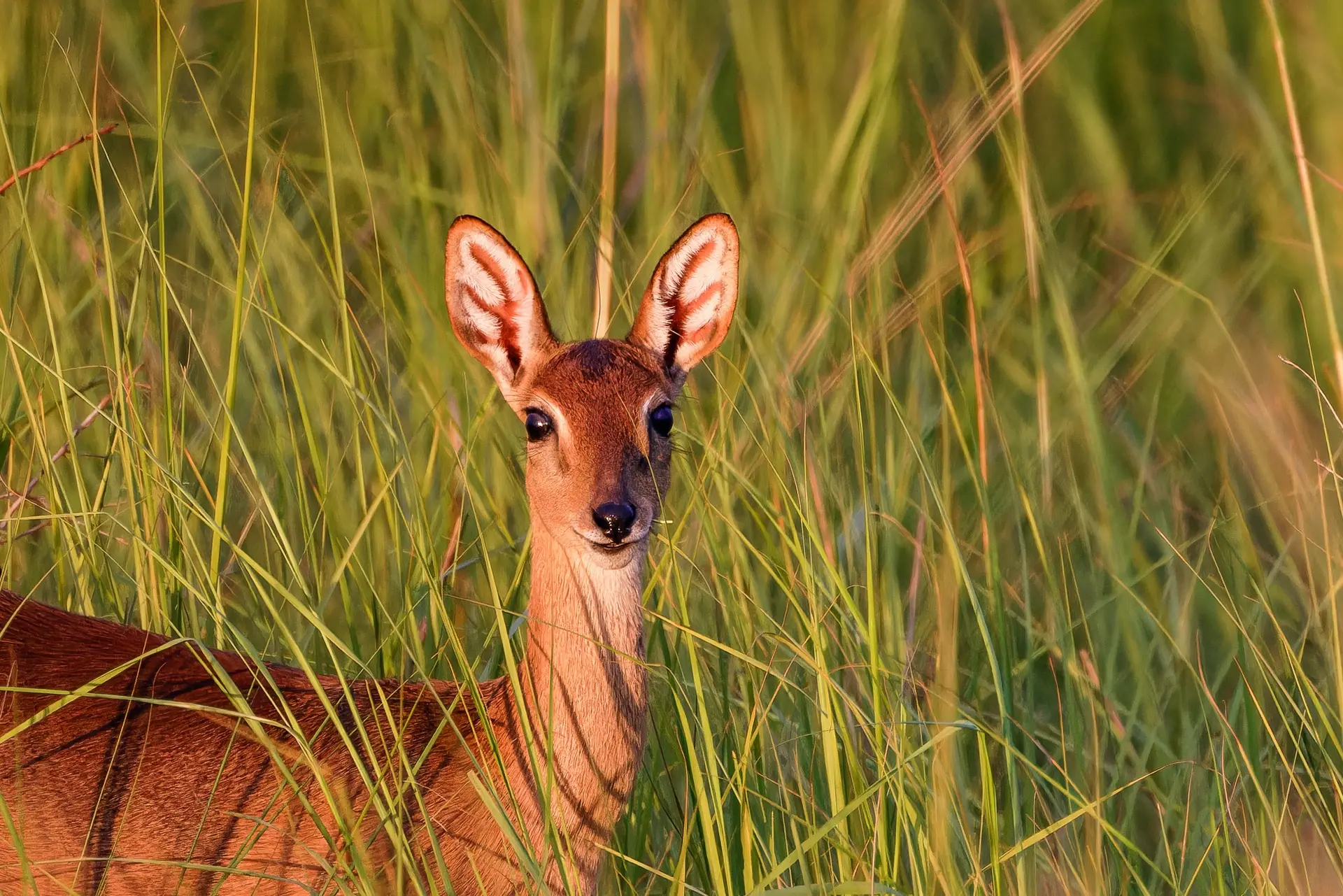
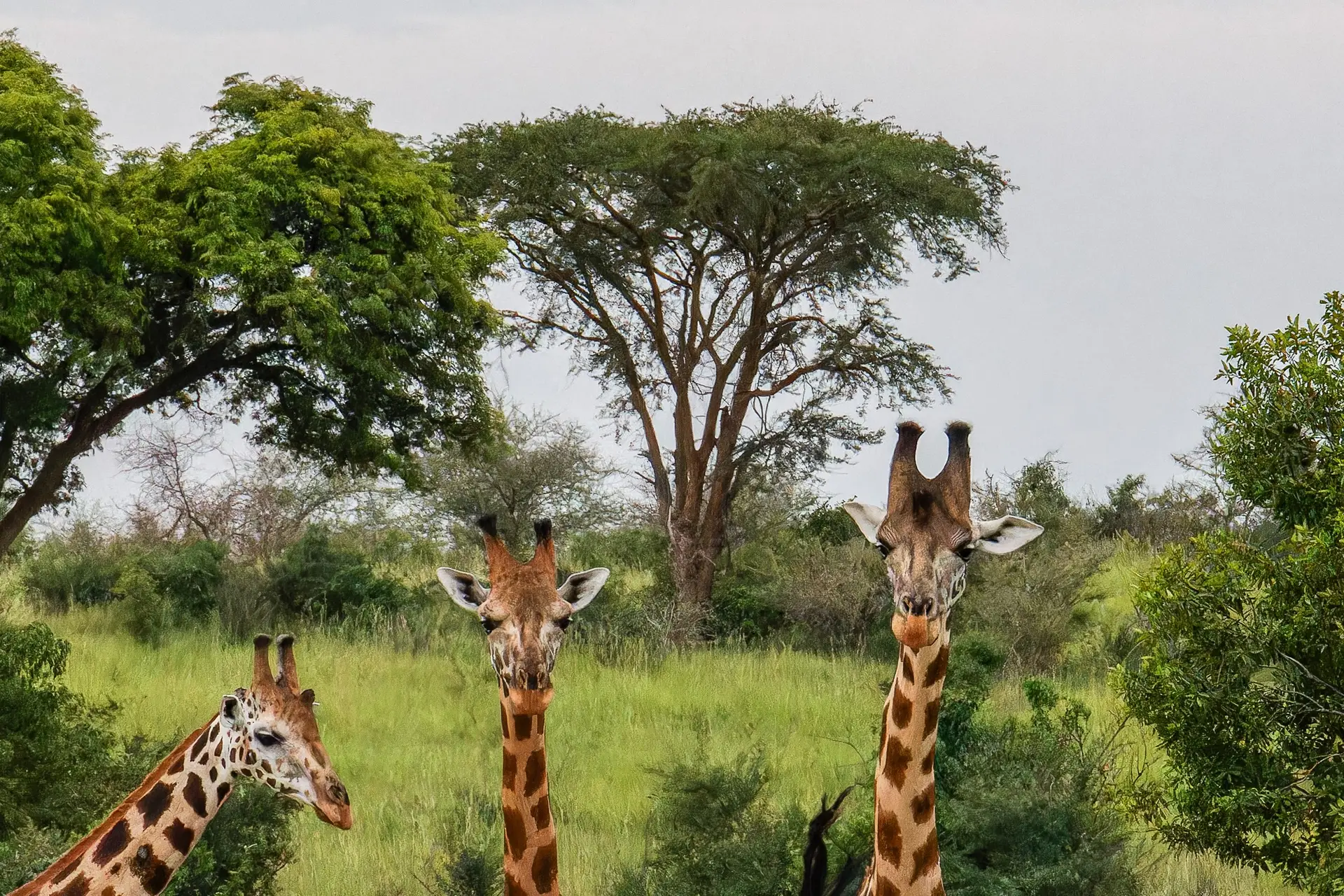
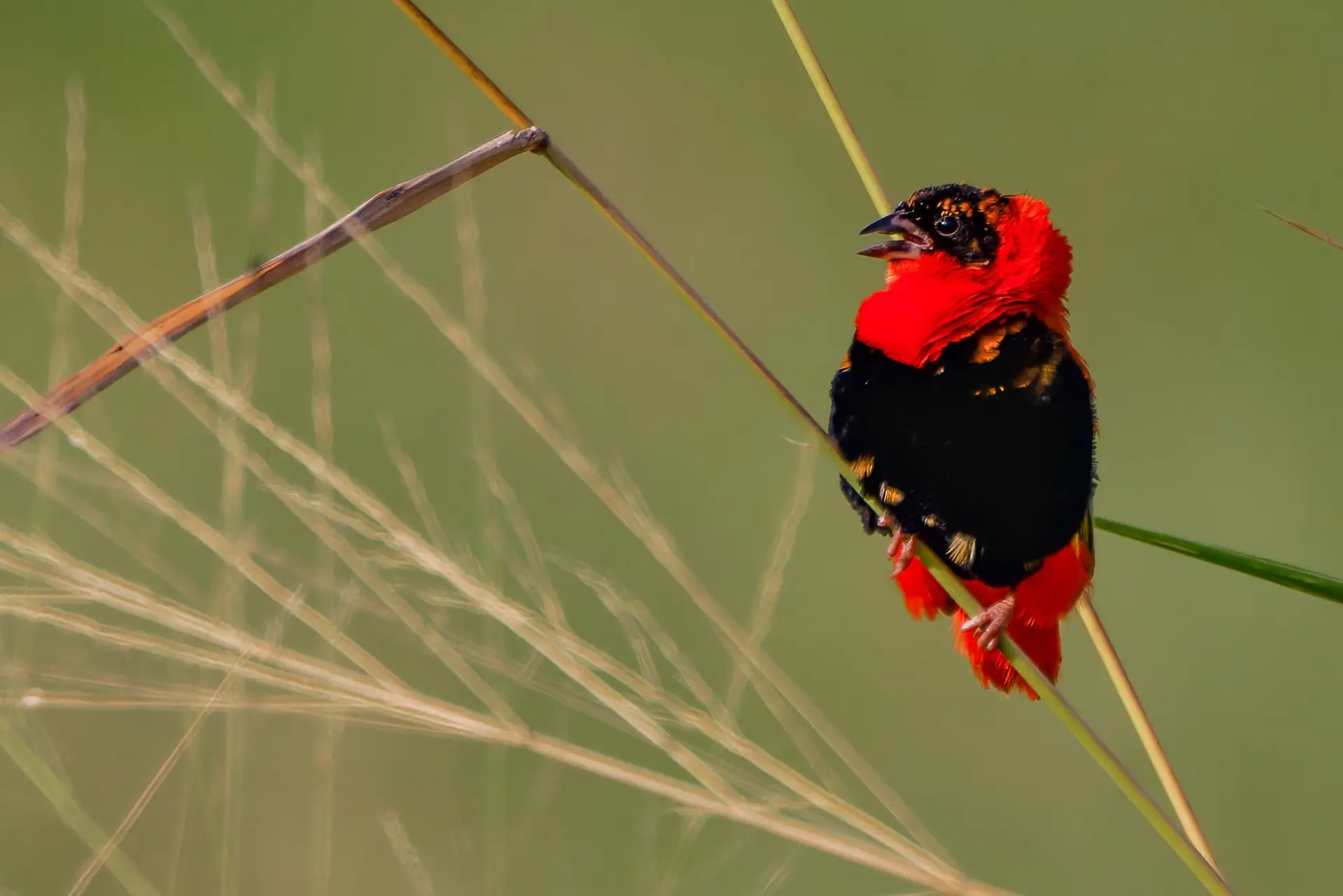
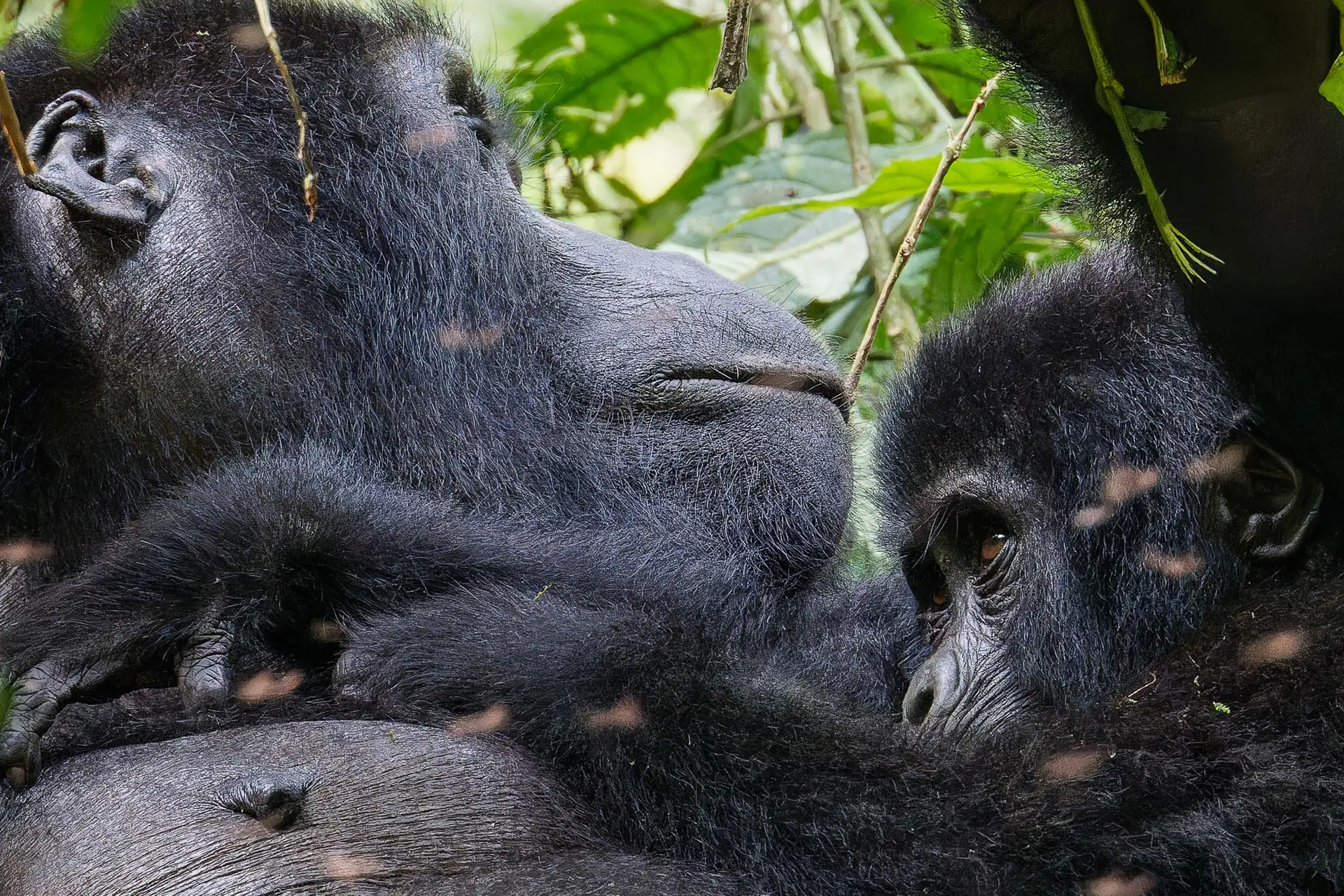
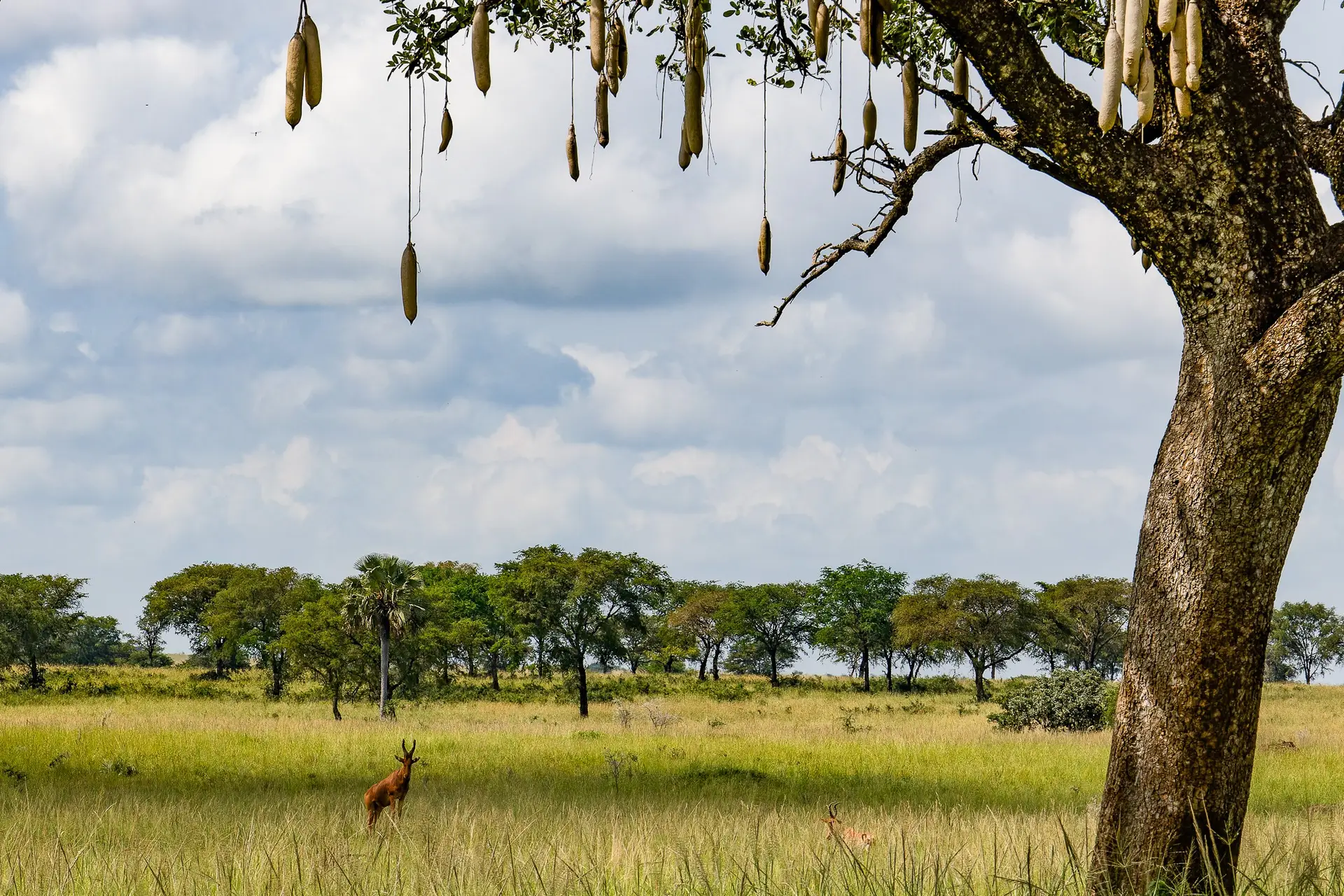

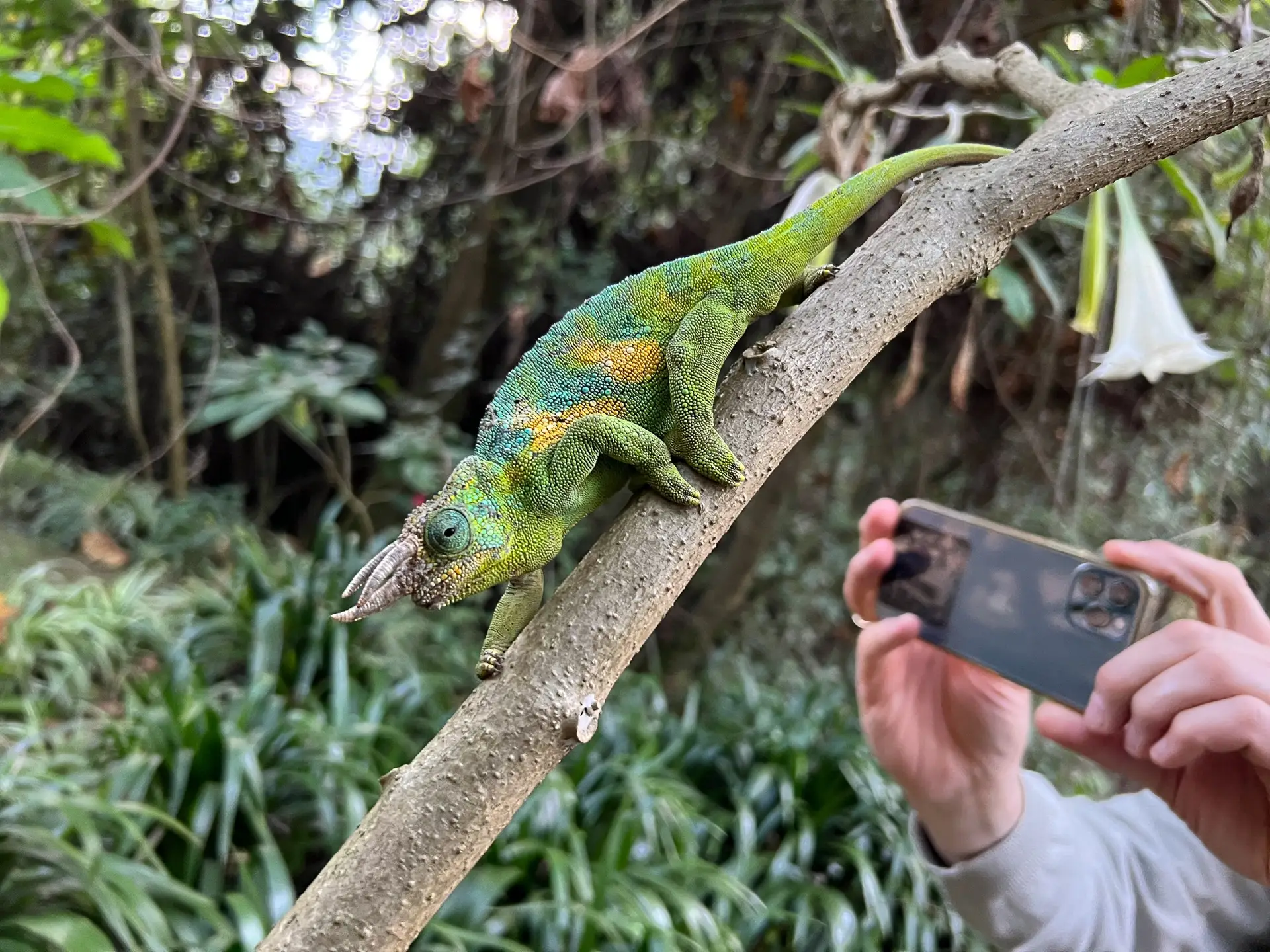
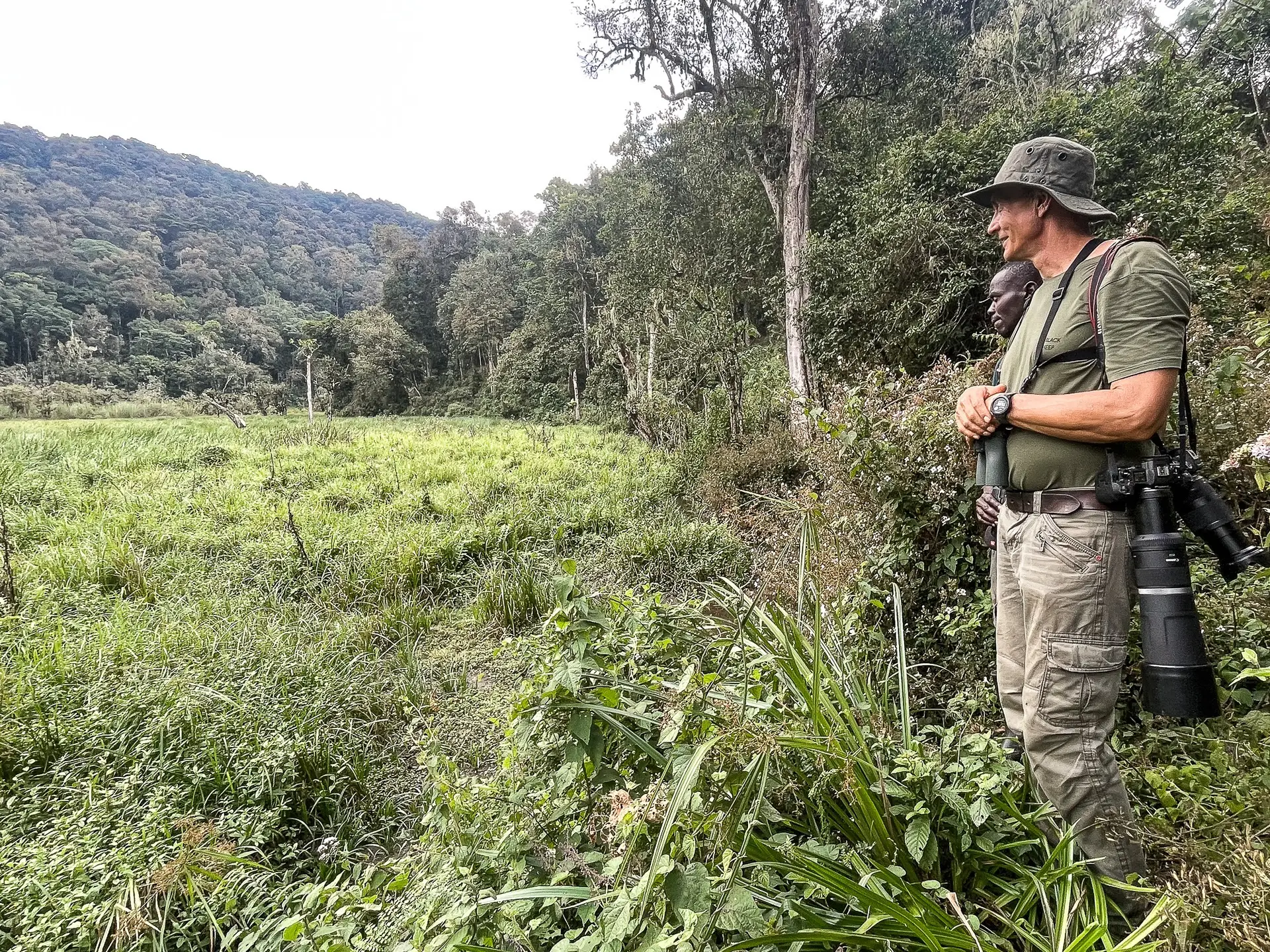
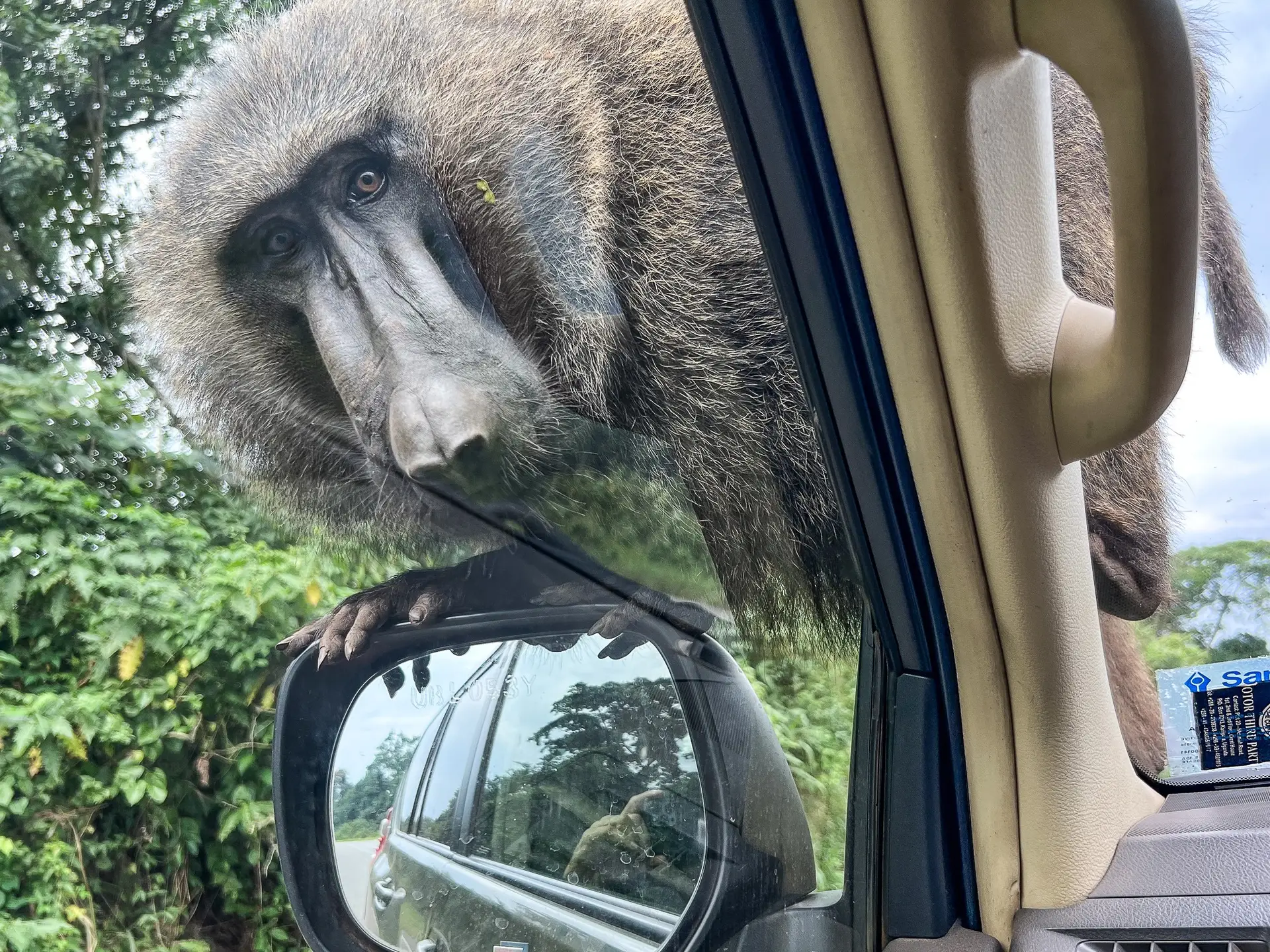

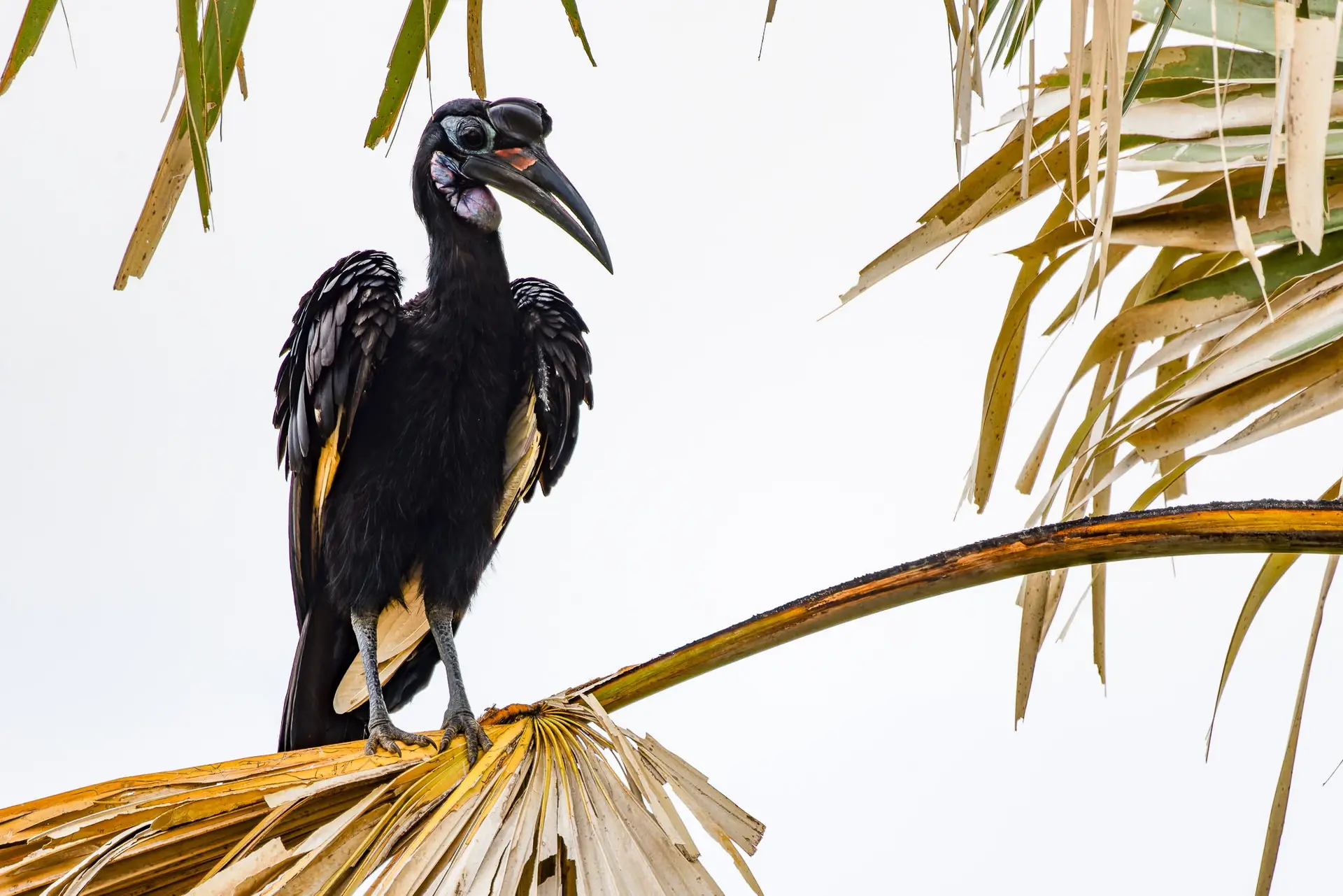

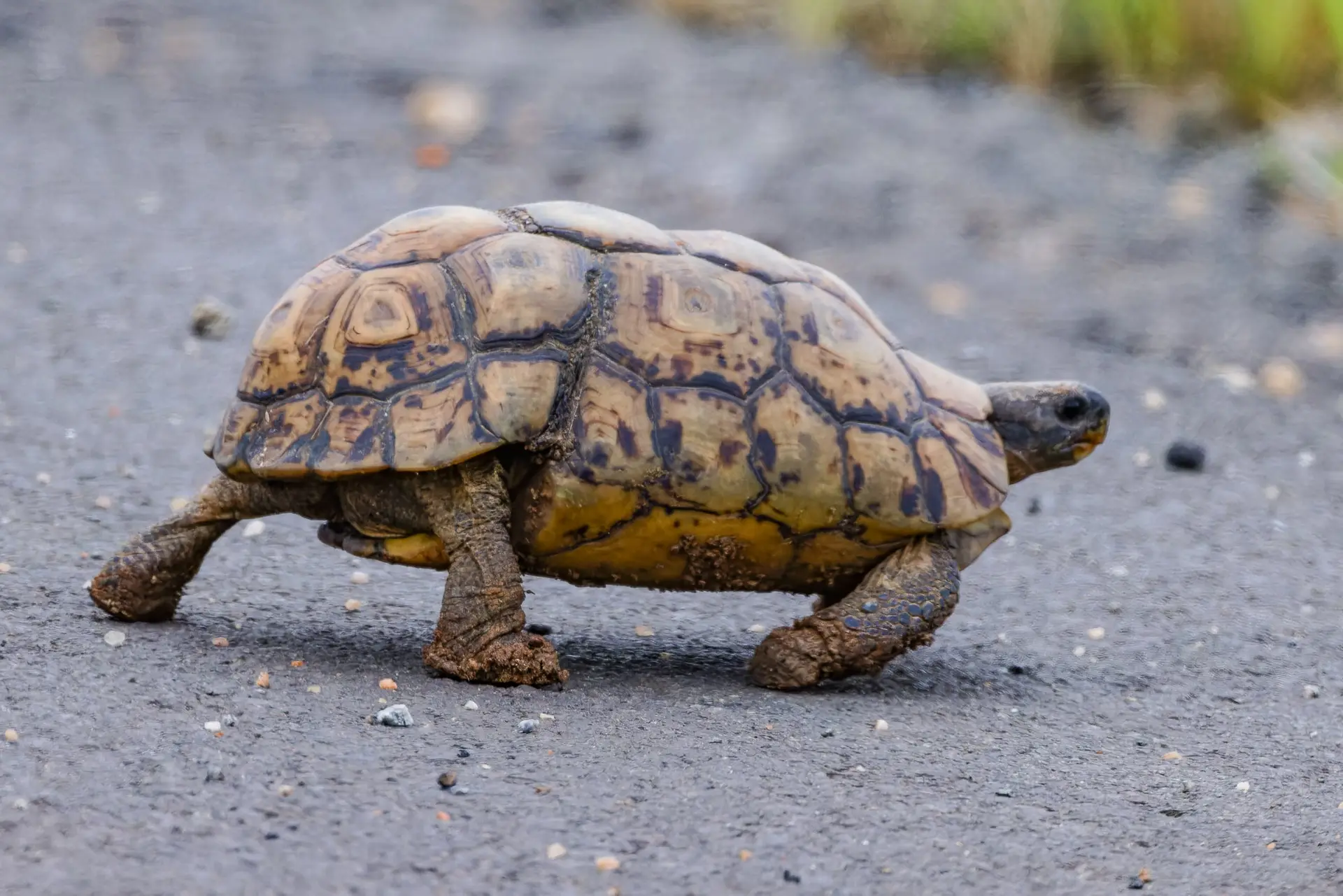
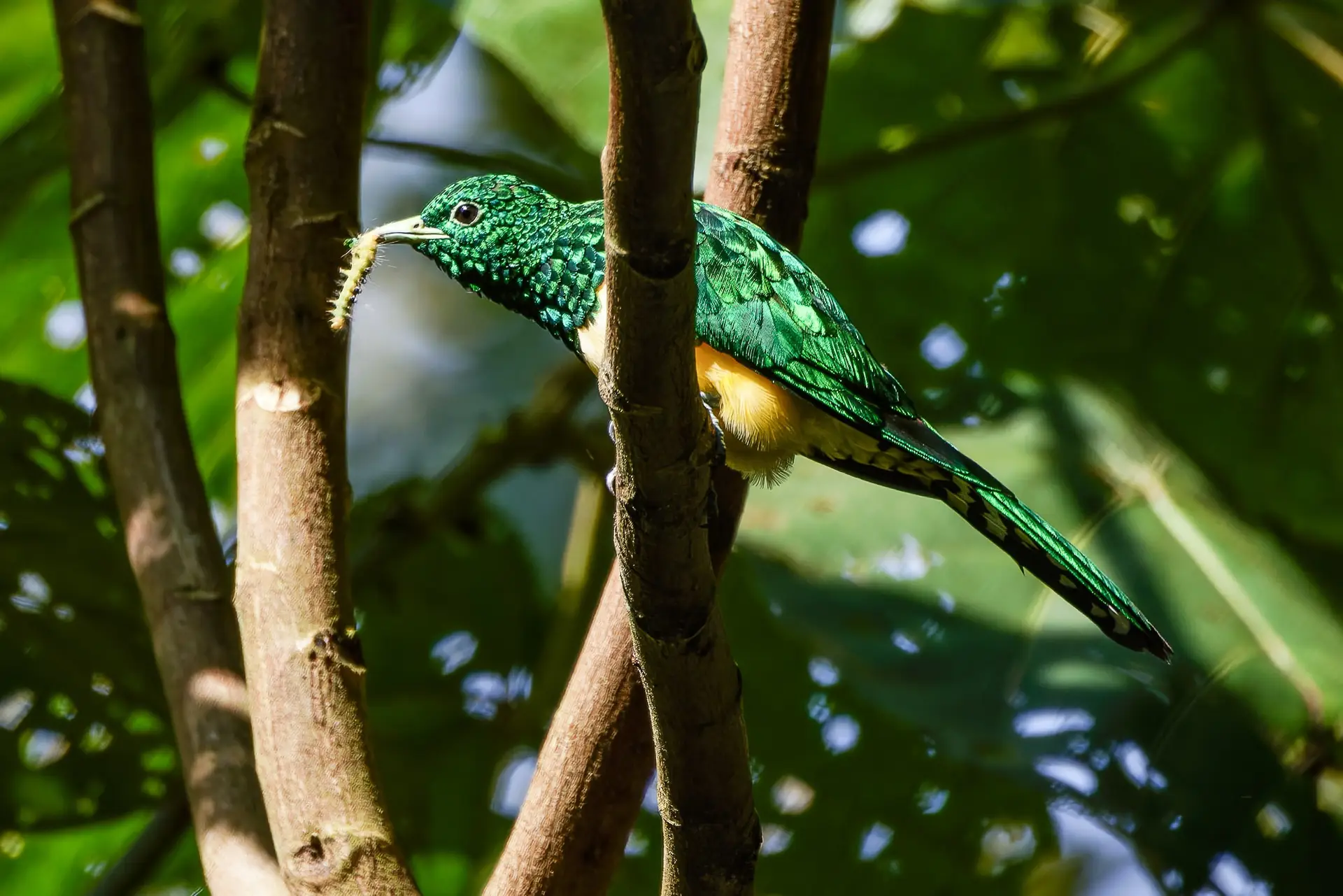

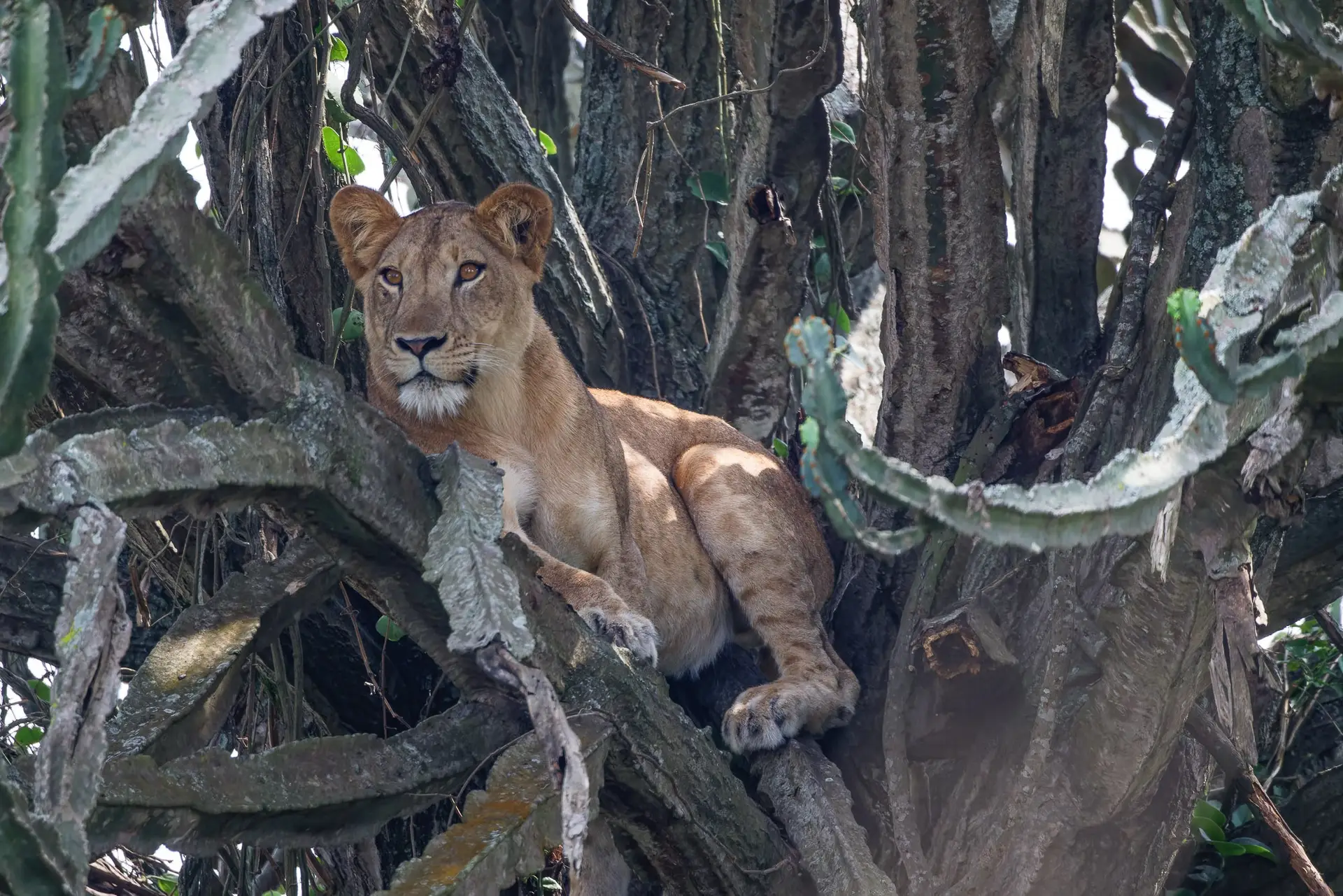
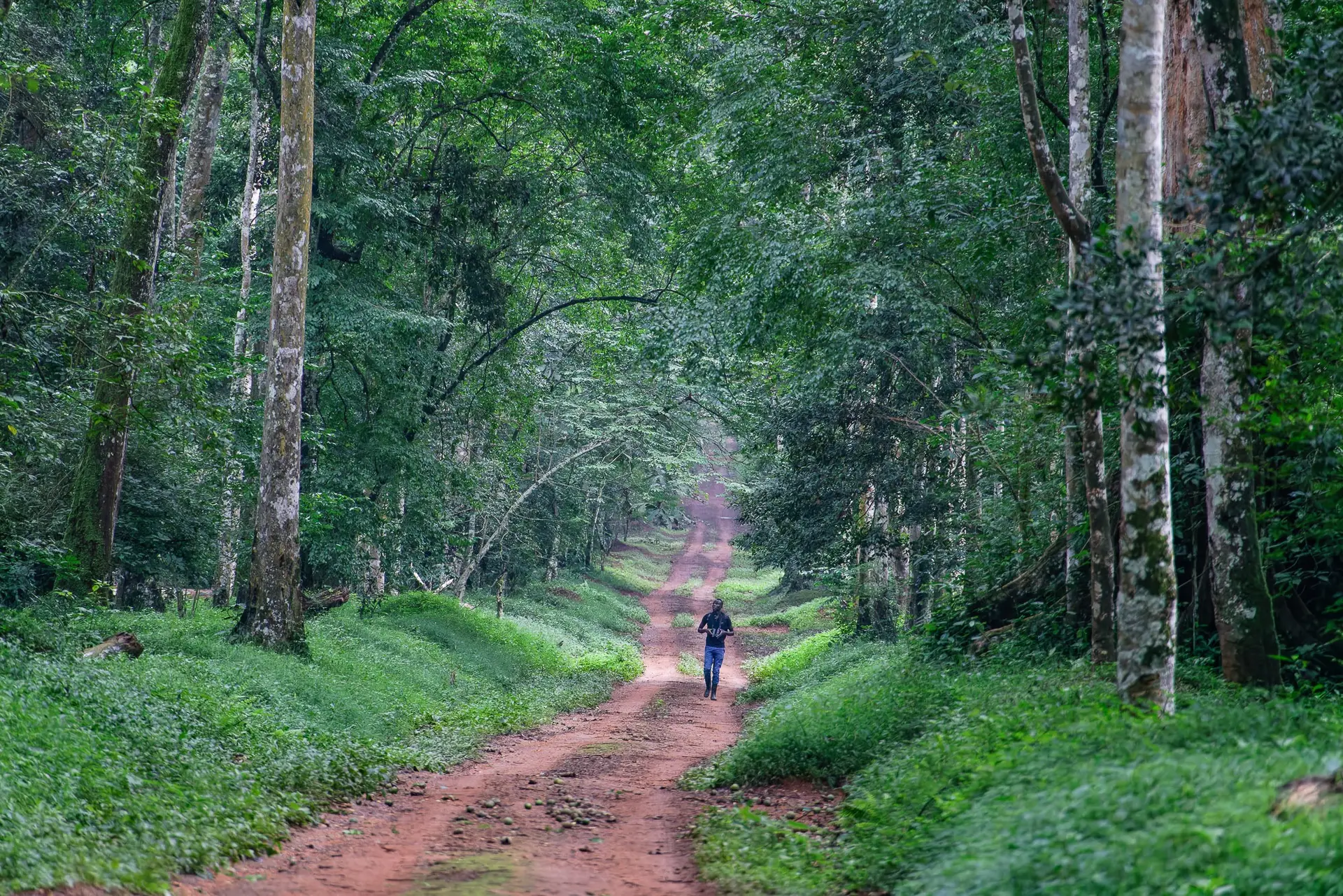
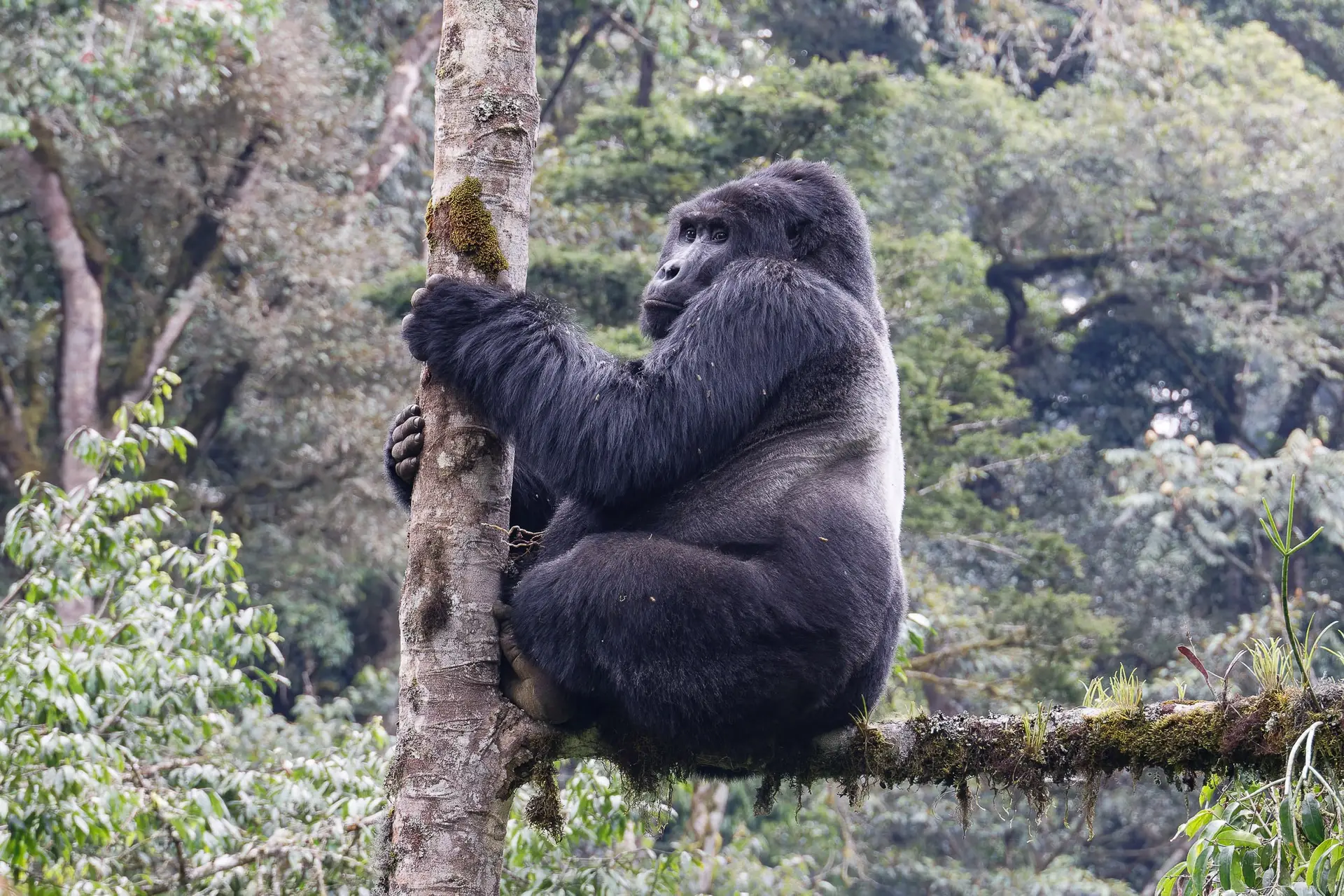
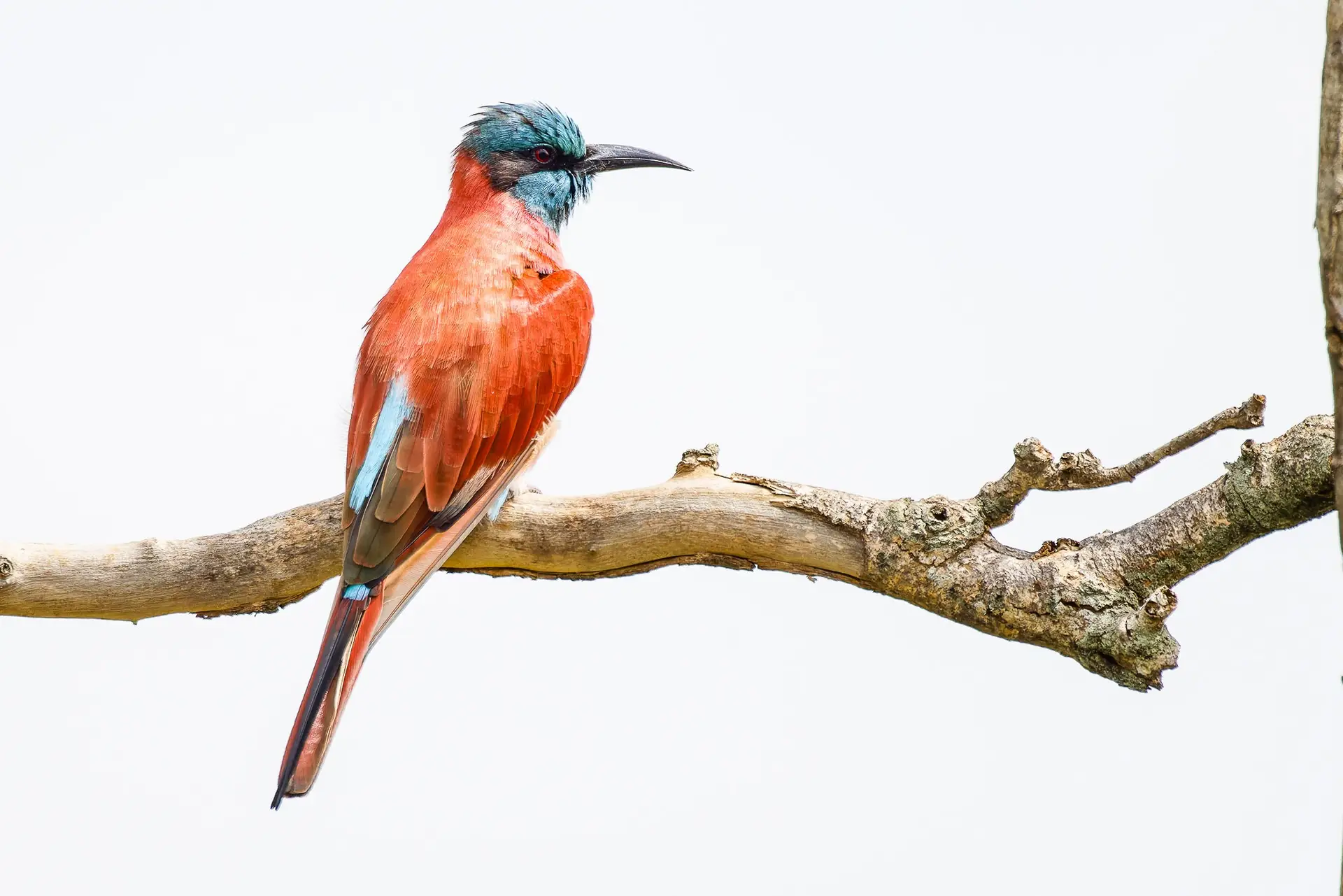
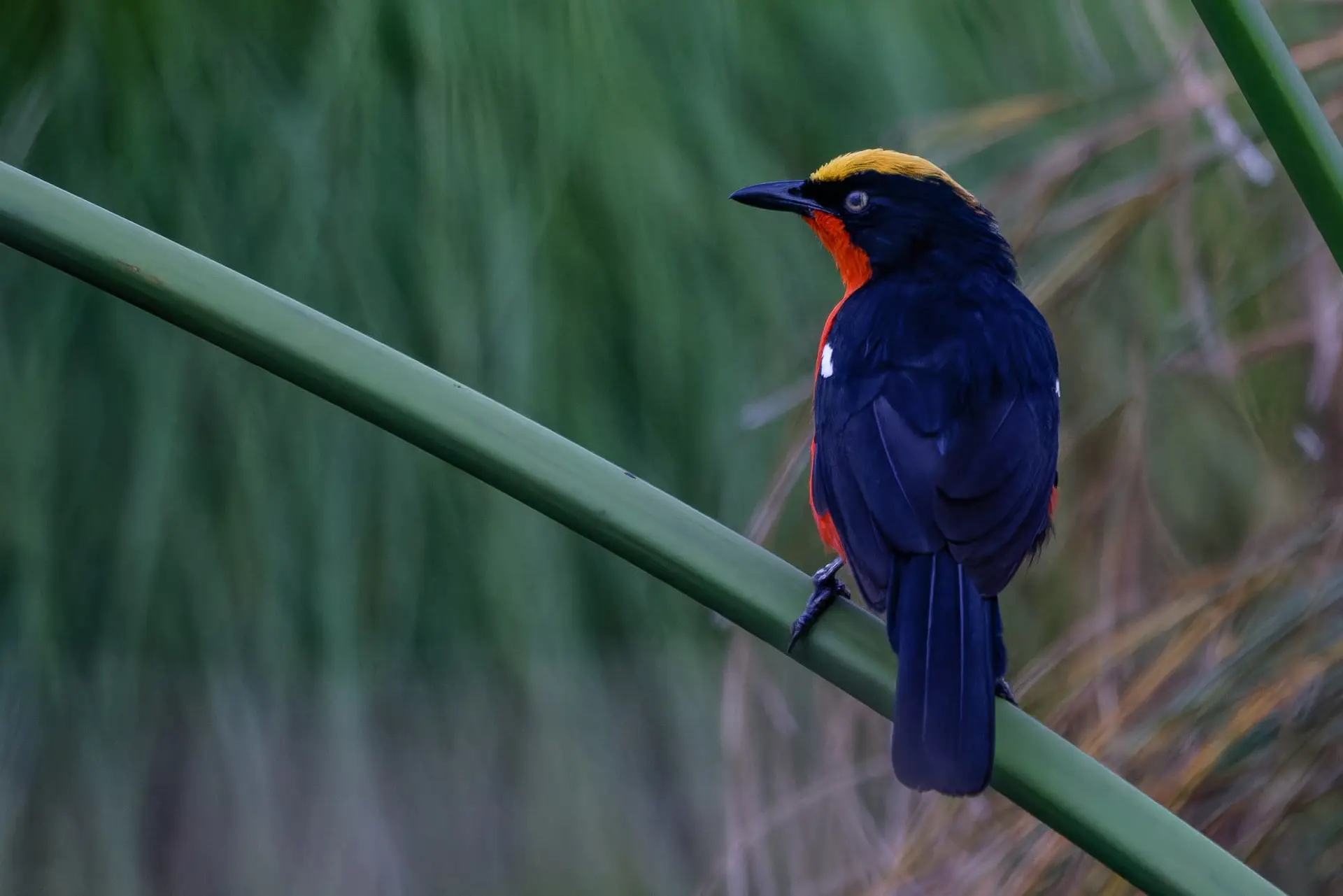
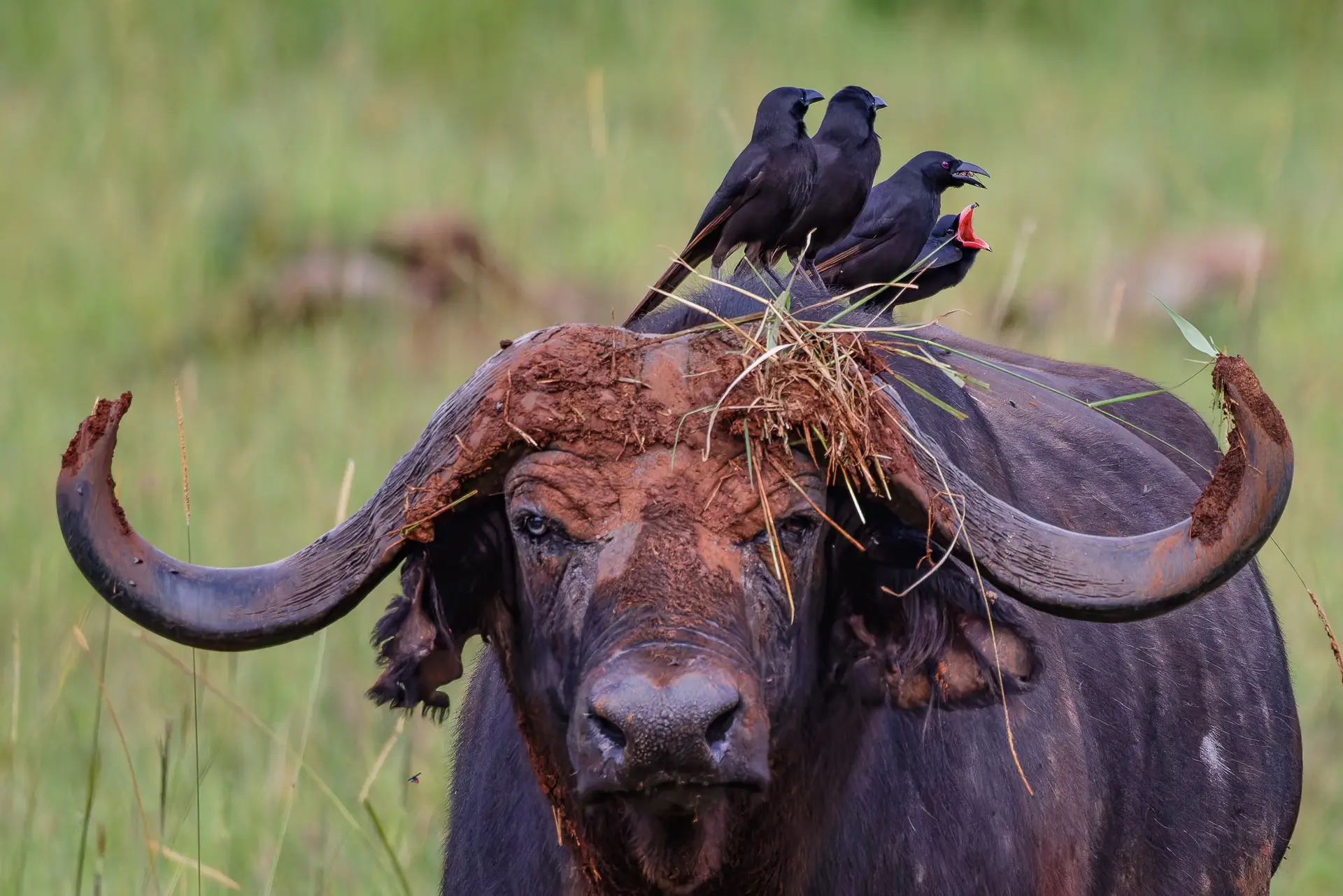
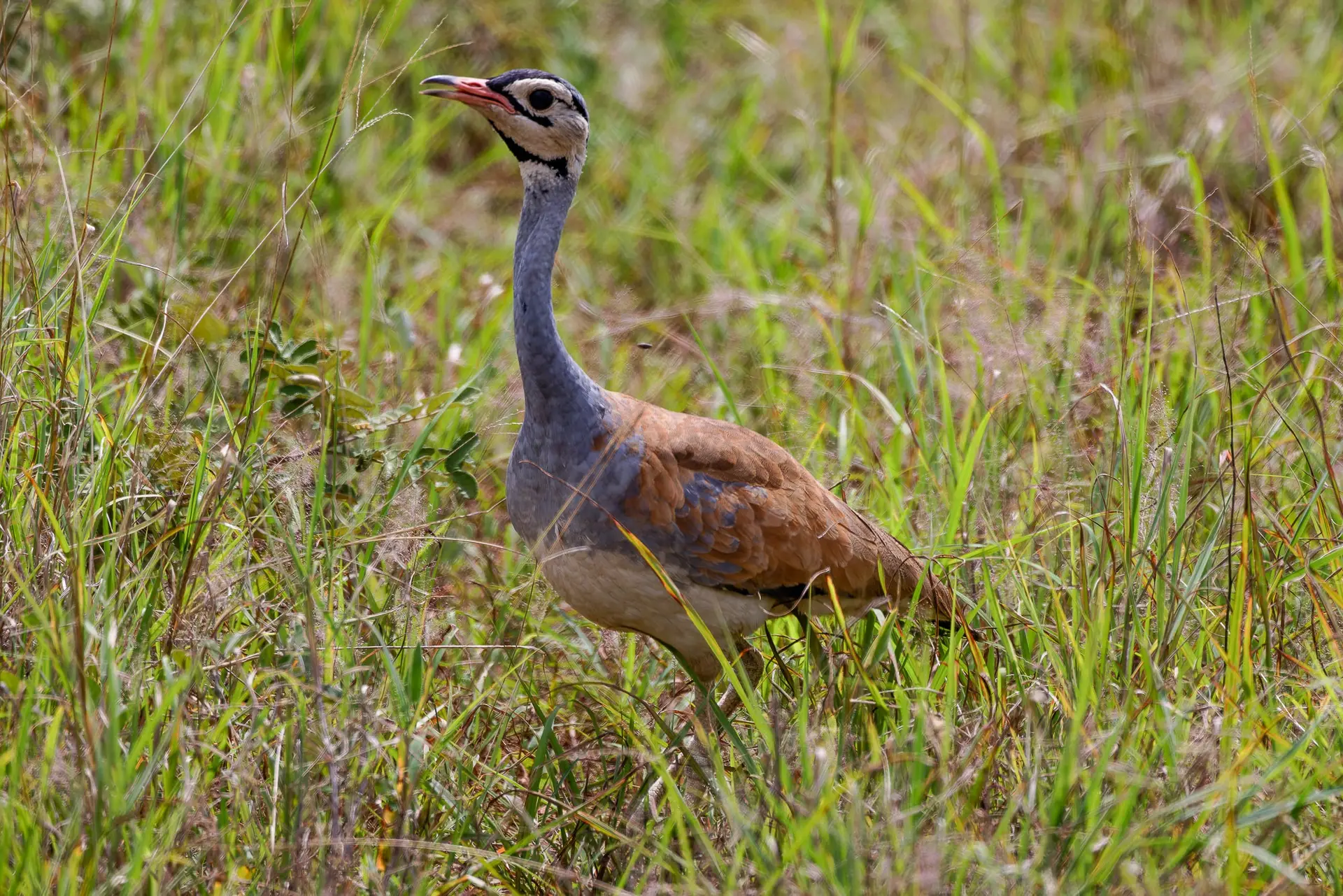
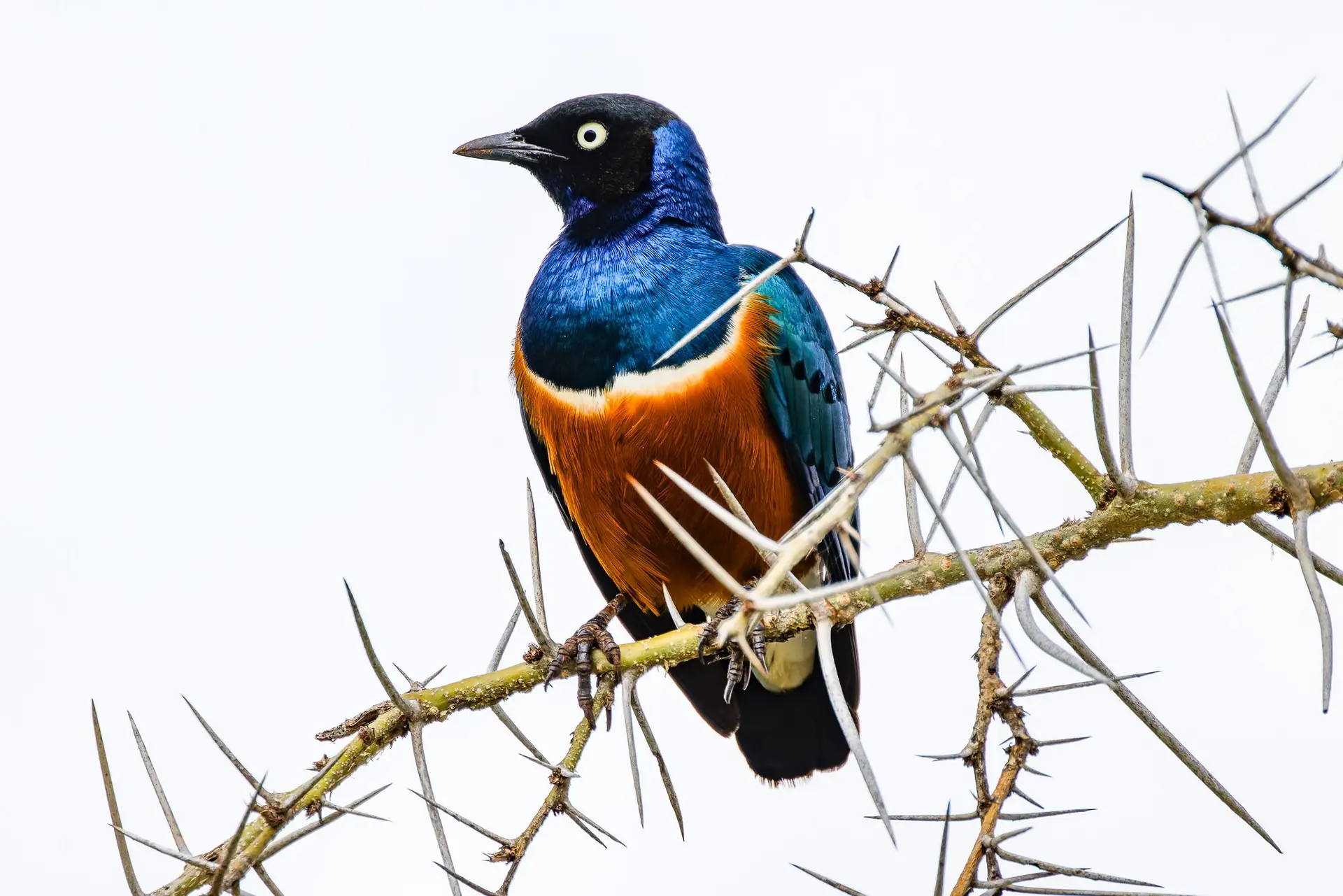
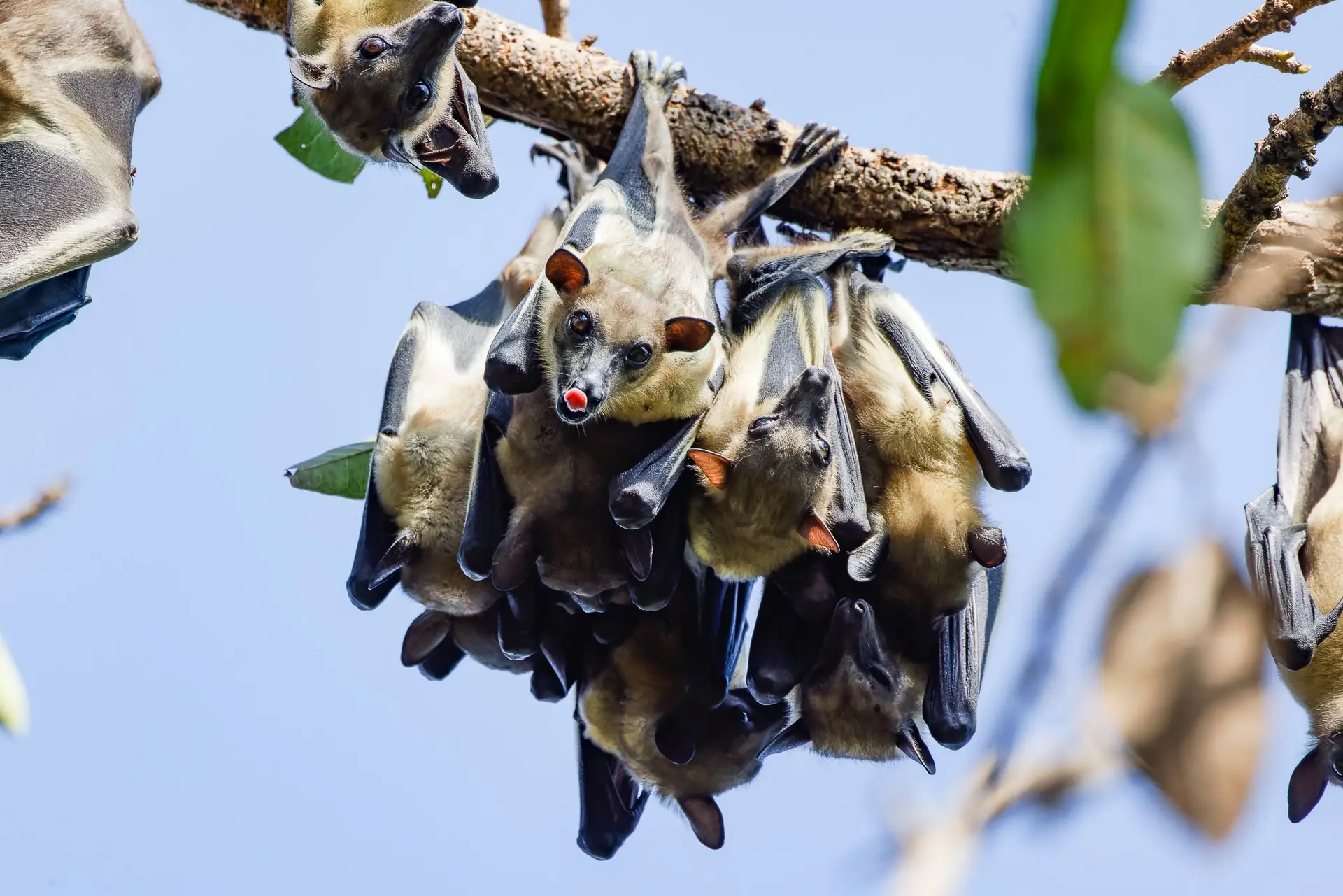
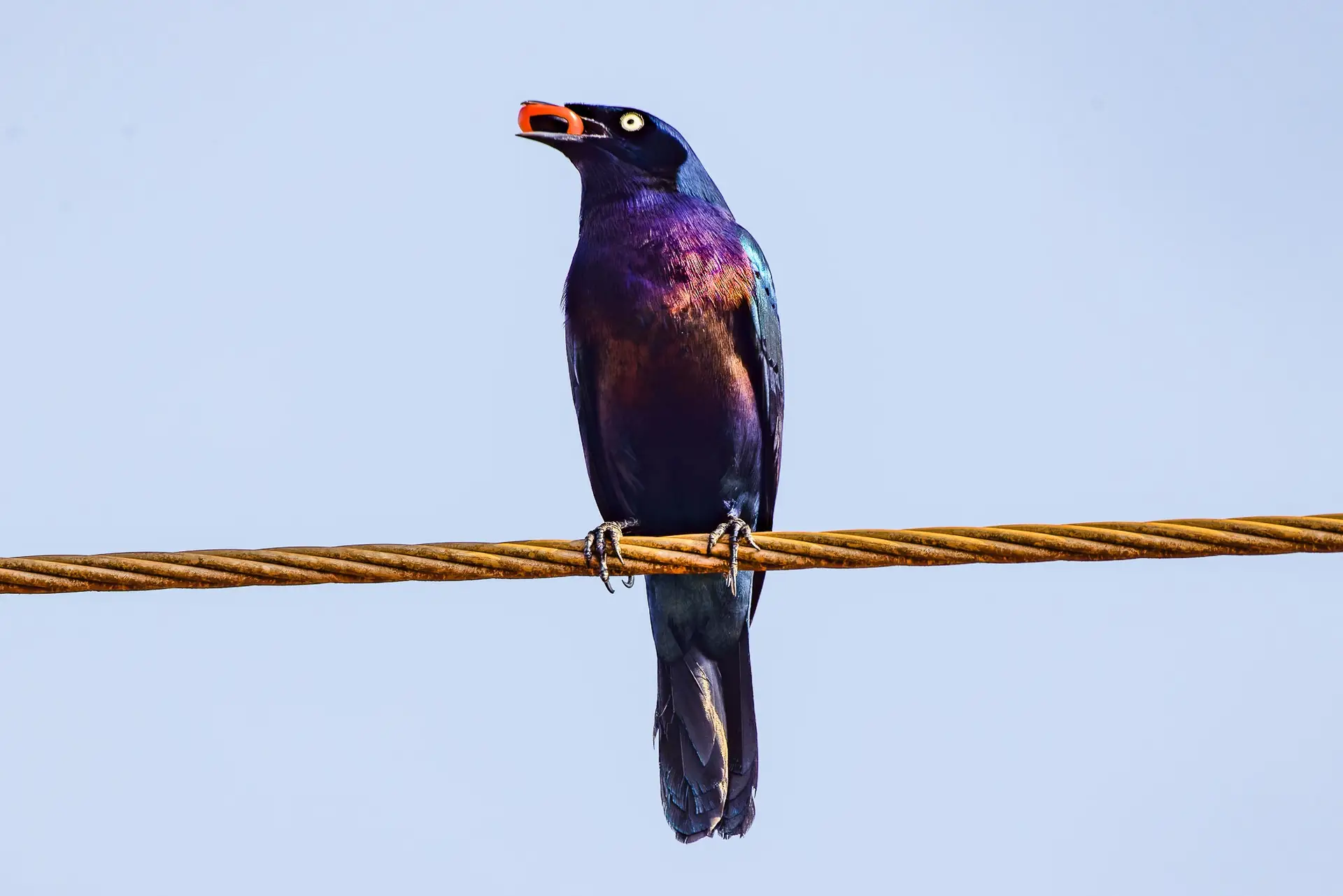

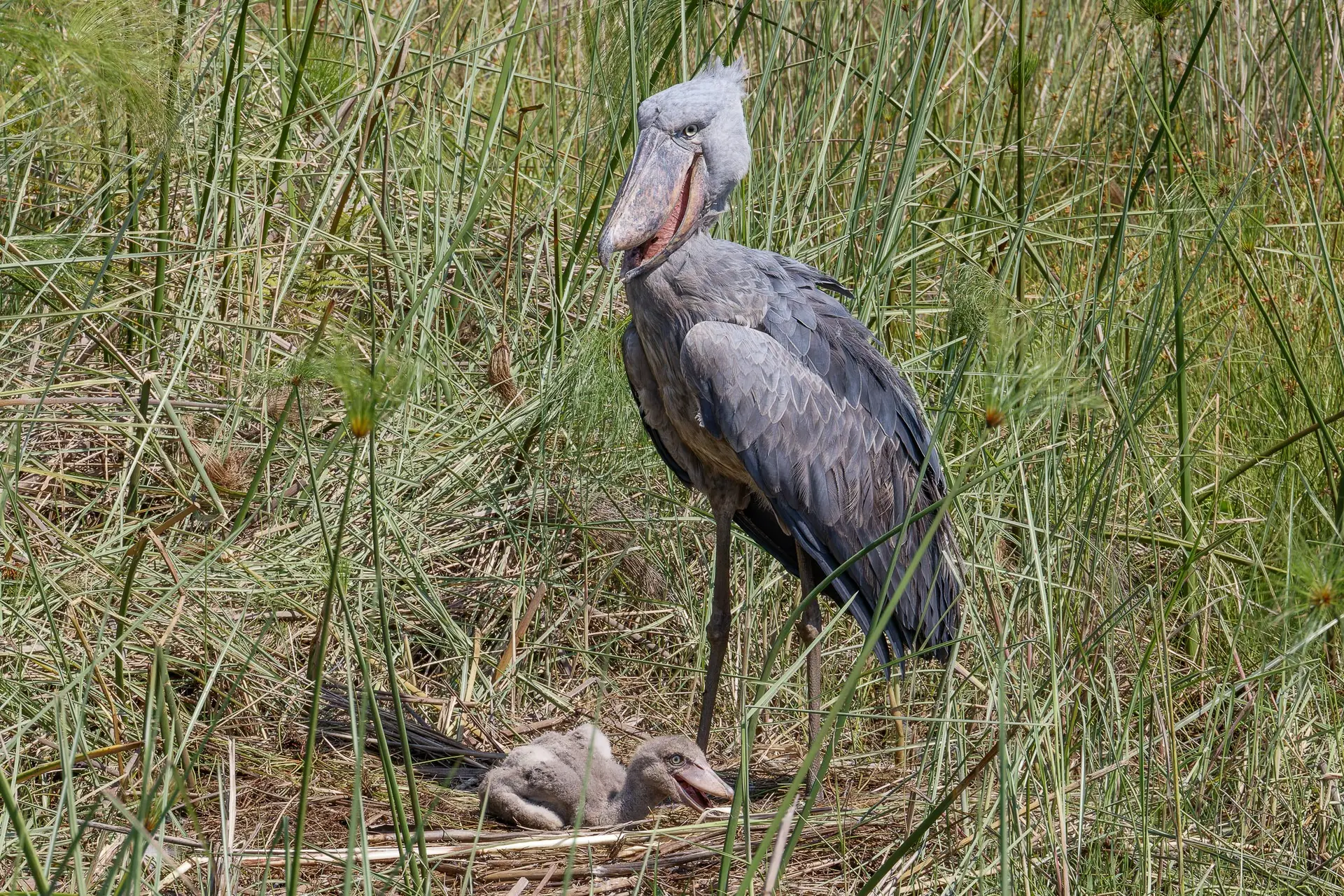
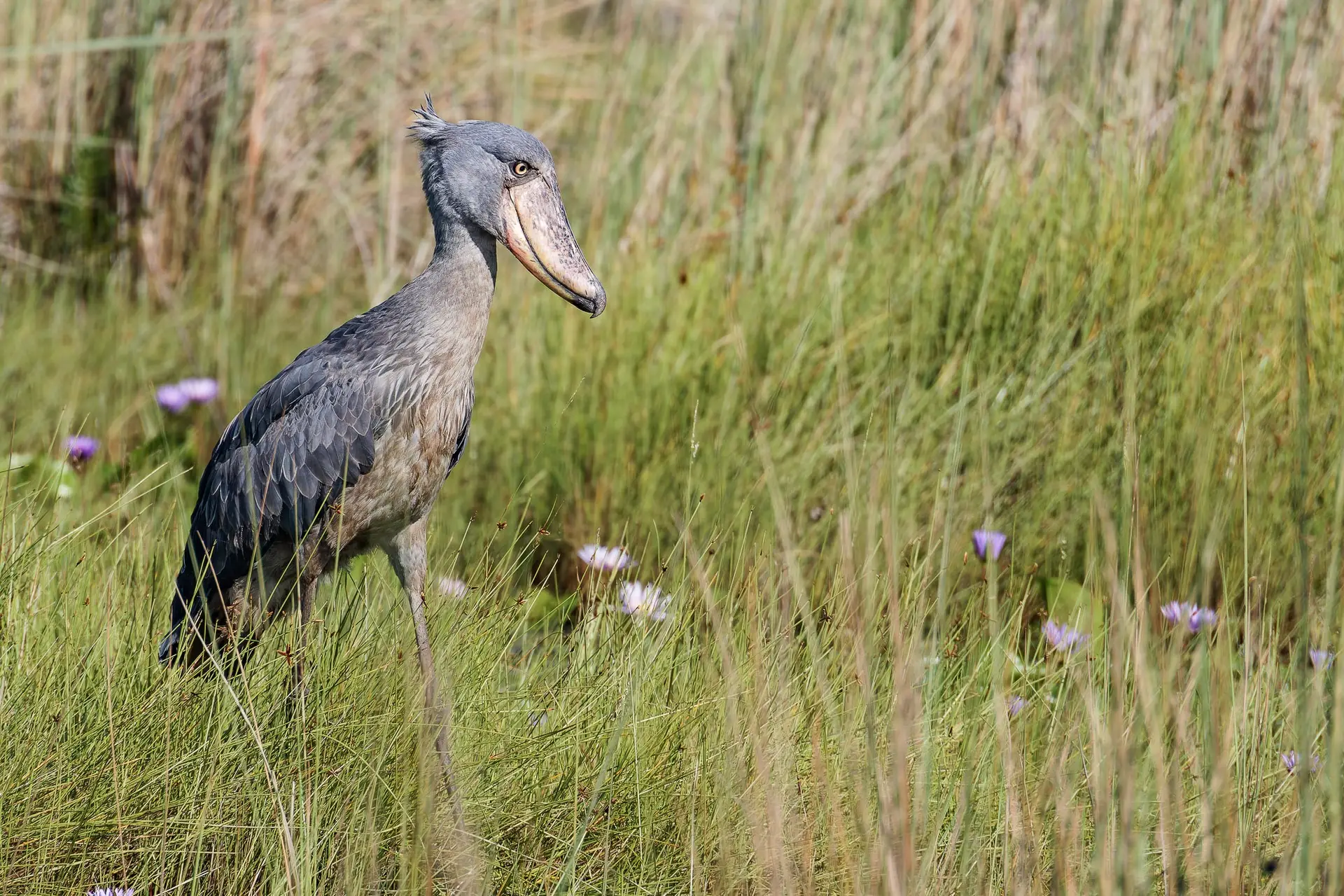

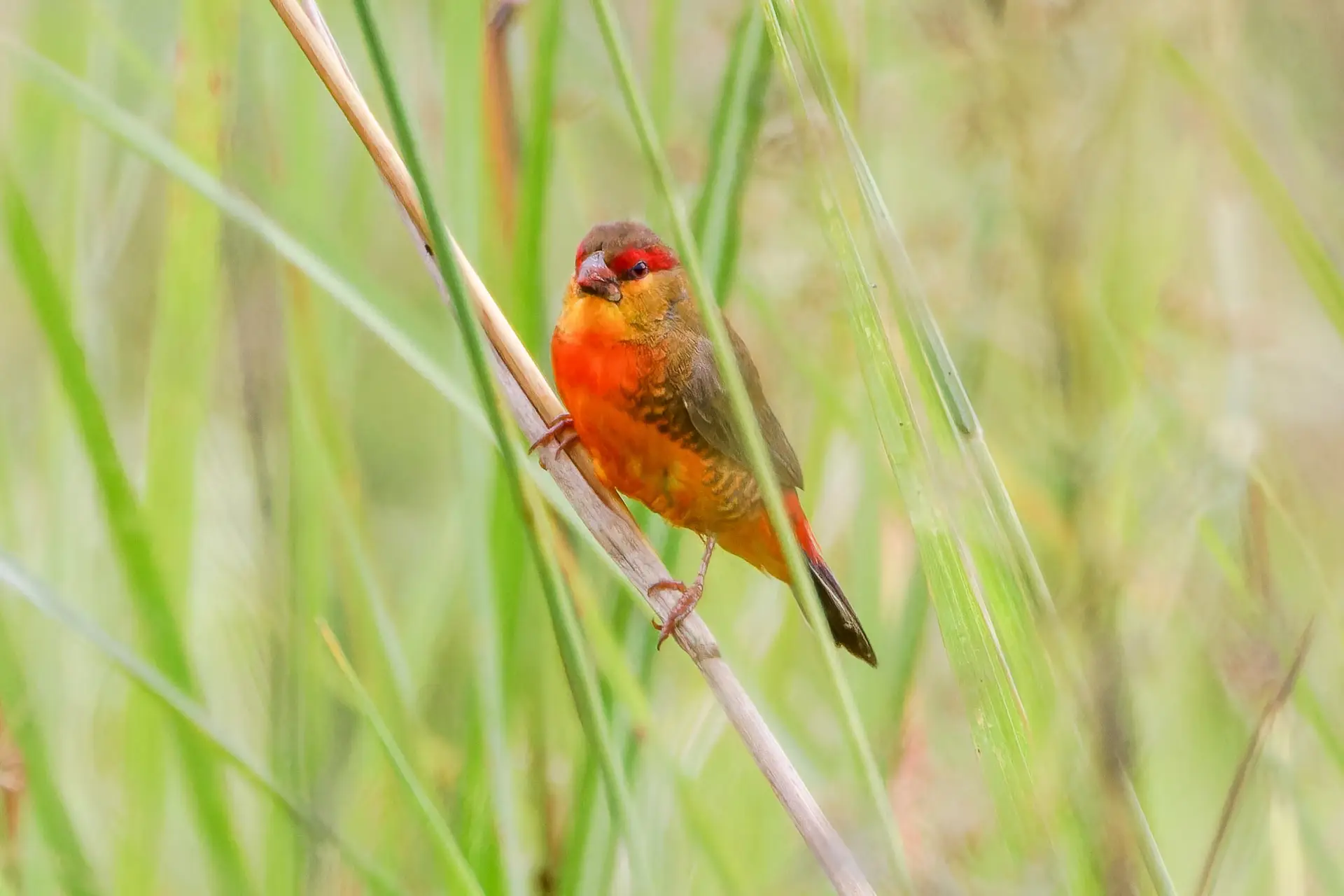
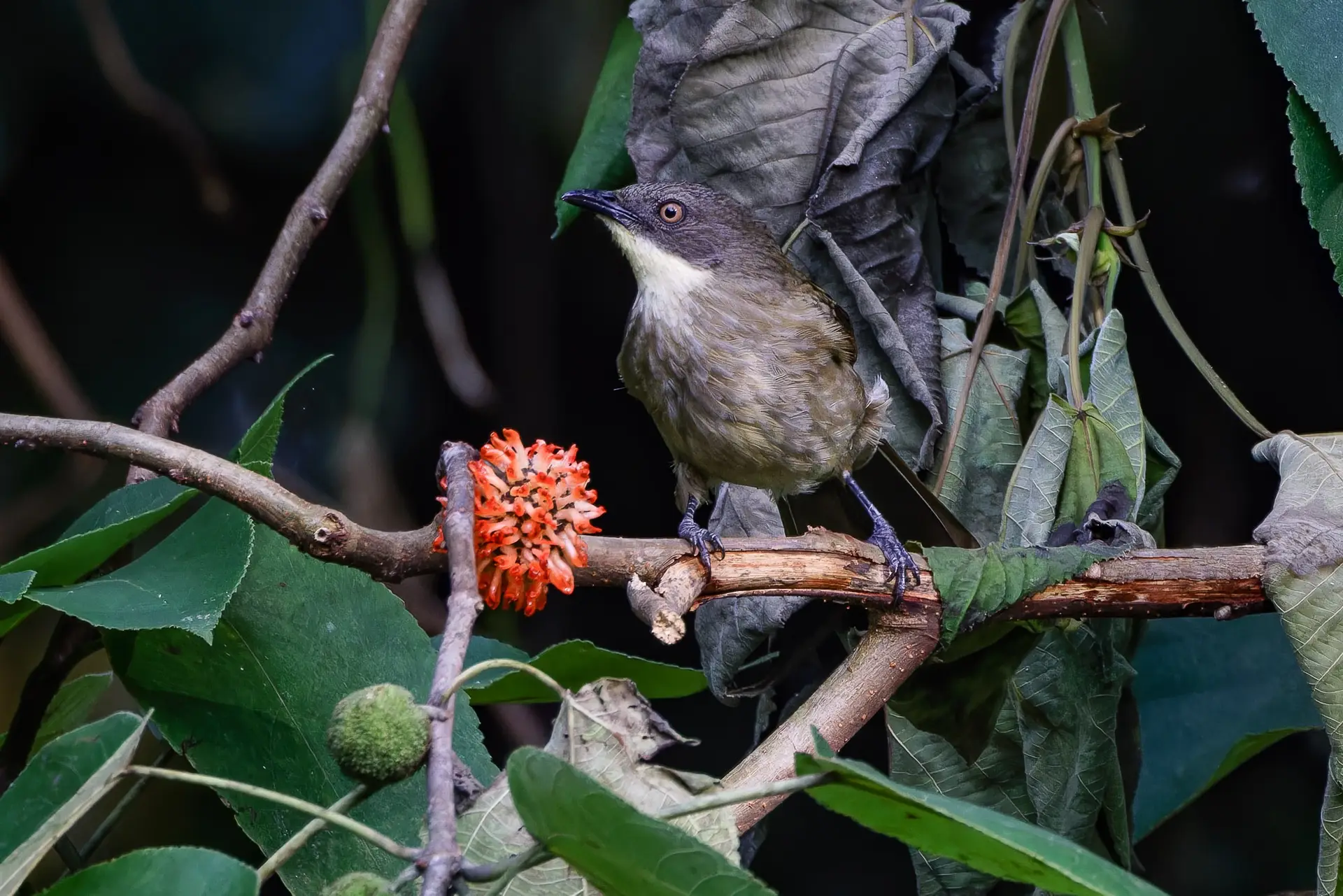
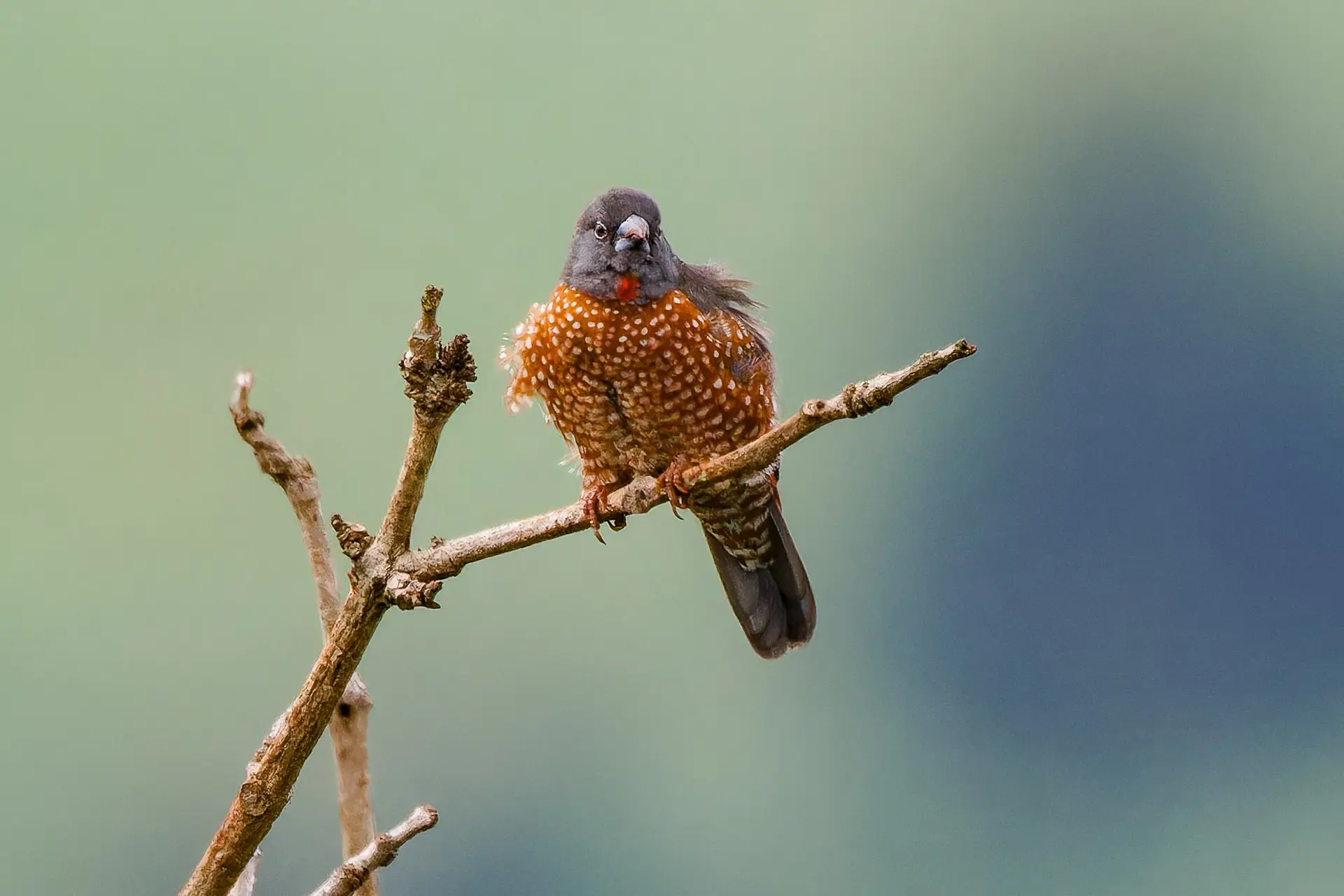
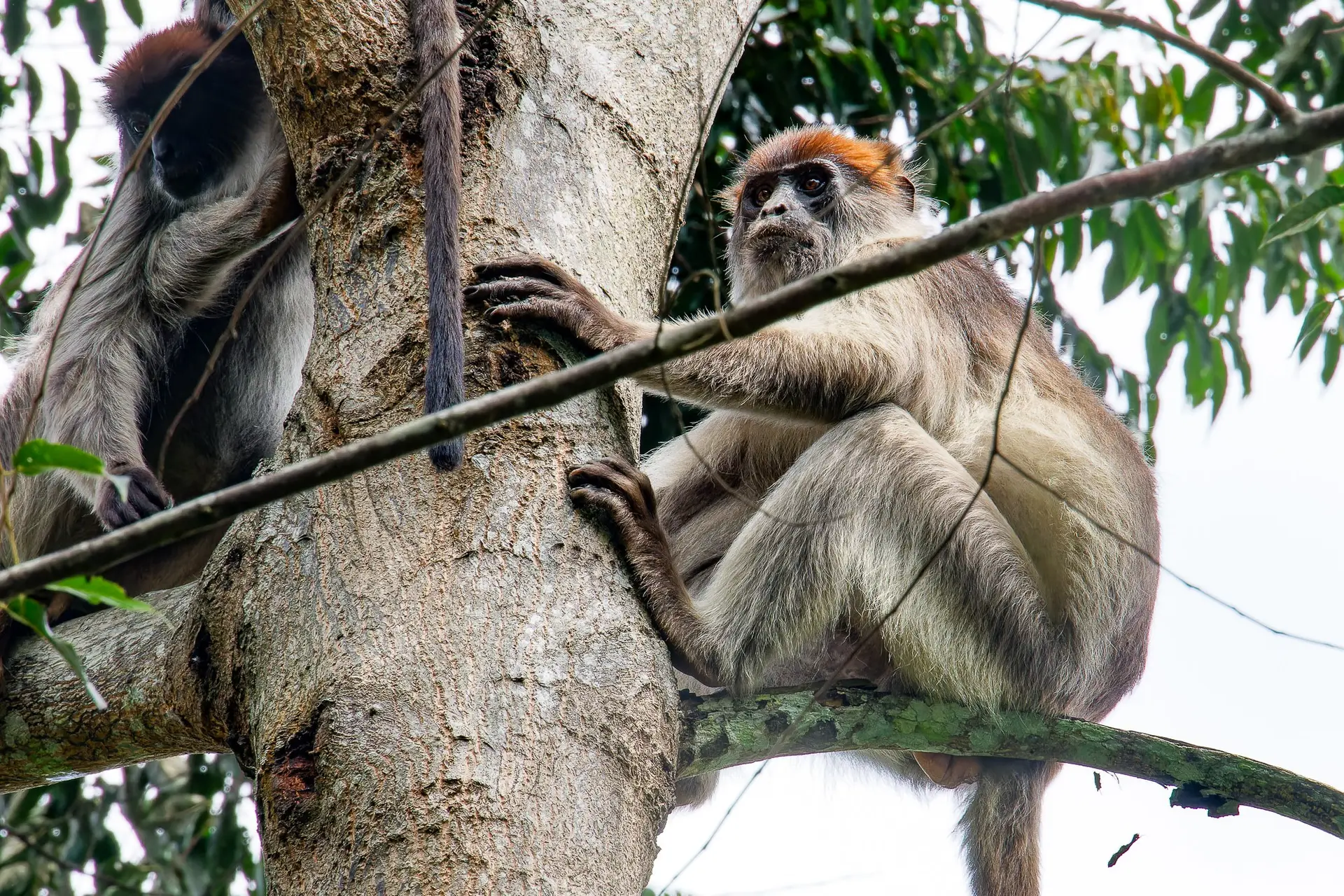

Overview
This itinerary covers Uganda’s most beautiful habitats, from lush rainforests to wild savannahs, wetlands, and swamps. It has been carefully curated in collaboration with renowned local Uganda experts and extensively tested by us. The accommodations are in the good middle-class Uganda standard category, selected with a strong focus on value for money, and we can confidently recommend all of them.
The journey starts and ends in Entebbe, Uganda’s only international airport, located on the shores of Lake Victoria. The western part of the country is dedicated to observing the richest variety of bird species, intense birding, butterfly watching, and, of course, observing Africa’s typical mammals. The west is home to many endemics of the northern Albertine Rift and some species from the Congo rainforest. Therefore, we will see coastal forest and savanna birds, as well as highly interesting sightings like tree-climbing lions, Nubian giraffes, the Defassa waterbuck, topi, and many other species.
A walk through the Botanical Gardens of Entebbe alone will captivate you. The namesake of this trip, the shoebill, an evolutionary marvel belonging to the pelican family, will be our first target in the Mabamba Swamps at the beginning of the journey. In the Bwindi rainforest, we will participate in the world-famous gorilla trekking, where we will also observe numerous other fascinating primates; here, permits are guaranteed, by the way! The Queen Elizabeth National Park is home to forest elephants and giant forest hogs. Chimpanzees and other primates can be observed through tracking in Kibale.
The experience with rare mammals, numerous colourful butterflies, fascinating reptiles, and beautiful bird species will also delight you at Murchison Falls/Kabalega Falls, where the Nile river carves out stunning landscapes between Lake Albert and Lake Victoria! In the Budongo Forest, we’ll add more species to our bird list, particularly those from the Ituri Region in the Congo, a destination once enjoyed by royal families who marvelled at this wealth of species.
2 overnight stays @ Airport Guest House
The Entebbe Botanical Garden is located on the northern shore of Lake Victoria, practically on the equator, covering an area of 40.7 hectares. This habitat is home to a variety of dragonflies, butterflies, and a multitude of birds (over 206 species).
Mantled guerezas, green and red-tailed monkeys, can be spotted in the trees and are very tame. Of course, observing intelligent grey parrots, superb sunbirds, the impressive great blue turaco, and brightly coloured birds like double-toothed barbets and black-headed gonoleks is inspiring. We also take pleasure in the vibrant agamas and, hopefully, fruit bats.
On the shores of Lake Victoria lies a wetland area protected by the local community, known as the Mabamba-Kamengo Wetland. Using a relatively large canoe, we glide through the papyrus swamp landscape to observe and photograph the extraordinary shoebill.
2 overnight stays @ Rwakobo Rock Lodge, as one can also observe Nightjars and Owls here in the evening.
The shoebill is an extremely impressive and quite large bird from the pelican family, undoubtedly one of the most coveted sightings for many naturalists.
Lake Mburo National Park covers an area of 260 km/2 and boasts a distinct fauna compared to other reserves. It is the only national park that encompasses an entire lake. The park is nestled in gentle hills and open grassy valleys, with four other smaller lakes within its boundaries. Interestingly, it is home to the Bohm’s zebra, a steppe zebra with contrasting stripes.
In this area, we encounter an abundance of unique bird species, but we are particularly excited to spot the namesake of our company, the “Yellow-throated Leaflove,” as well as the papyrus gonolek and the African finfoot, among others.
… deep into the forest
2 overnight stays @ Broadbill Forest Camp
The Bwindi Impenetrable Forest is located in southwestern Uganda, stretching across the flanks of the Albert Rift, the northernmost part of the East African Rift Valley. It generally lies at a high altitude and is consequently cooler, with temperatures that can drop to 9 degrees Celsius.
We are excited to encounter the Jackson’s chameleon, along with numerous beautiful butterflies, frogs, and bats. Perhaps we will even find the Handsome Spurfowl, which is worth seeing just for its name alone.
The African Bird Club ranks forest bird watching in Bwindi as the number one experience in Africa!
Early on, we embark on a challenging trek into the jungle. Finally, we come face to face with the forest gorillas, an experience of a lifetime! It’s a wonderful experience to gaze into the eyes of these gentle giants, observing them in awe as they play and go about their daily activities.
The forest walks in Bwindi are filled with diverse life, and you find yourself in an exhausting, non-stop mode of observation amidst this incredibly fertile forest landscape. The local guides have hundreds of sights in mind, and time and again, you focus on a new bird species, a type of monkey, delicate plants, massively impressive trees, magnificent ferns, and butterflies.
The hope of spotting the Angola pitta, red-eyed wattle-eye, black-crowned waxbill, common bristlebill, and the elusive Kivu ground thrush should inspire us to explore the forest thoroughly.
Lions in the euphorbias?
2 overnight stays @ Queen Elisabeth Bush Lodge
Queen Elizabeth National Park, the second-largest national park in Uganda, is one of the most sought-after destinations in Uganda due to its diversity, boasting over 100 mammal species, 620 bird species, and a daily observation record of 296 bird species.
Among the numerous bird species, we will specifically search for the famous tree-climbing lions in the Ishasha Sector, which is truly sensational as these lions have developed this unique behaviour.
Of course, the forest elephants (Loxodonta cyclotis – you have seen L. africana with us in Namibia), giant forest hogs, Uganda kob, and the elusive side-striped jackal are equally fascinating and worth observing.
With the massive backdrop of the Ruwenzori Mountains, the photo opportunities are simply perfect. And, of course, we won’t miss the boat ride on the Kazinga Channel, a wide, 32-kilometer natural channel in Uganda that connects Lake George and the larger Lake Edward.
Through forest, mountain, and valley
2 overnight stays @ Kibale Forest Camp
The Bigodi Wetland is a community-based conservation initiative by the local population of Uganda. Here, we will go on an intensive bird and butterfly watching walk.
Interestingly, Sitatungas (water kudus) inhabit this area, otters can be spotted in the waters, and even the otherwise elusive bushpig can be found here.
In Kibale, there are 13 different primate species! Besides chimpanzees, the L’Hoest’s monkeys and black-and-white colobus monkeys are particularly interesting.
We will visit the chimpanzees through an active “Chimpanzee Trekking.”
The bird photographer hopes to capture images of the Green-breasted Pitta, Black Bee-eater, Yellow-spotted Nicator, Abyssinian Ground-Thrush, not to mention various raptors.
Good for birdwatching…
1 overnight stay @ Masindi Hotel
Those who haven’t yet discovered the world of butterflies will quickly develop an enthusiasm for “flying flowers” here! You won’t want to move on from this place, as the remarkable butterfly experience will keep your cameras locked onto your eyes.
The Budongo Forest is a wildlife reserve adjacent to Murchison Falls National Park in northwestern Uganda, known for its incredible biodiversity. Even the royal family appreciated its value, which is why this exposed stretch of the forest is called the Royal Mile.
You are already familiar with rock hyraxes from Namibia; now, you will see rainforest tree hyraxes. Among various monkey species, we look forward to encountering diademed monkeys.
Of course, there are hundreds of bird species to see here as well, including the Red-tailed Bristlebill, White-thighed Hornbill, Black-and-White-casqued Hornbill, Yellow-billed Barbet, and African Dwarf Kingfisher, which are sure to convert even those who are not dedicated birdwatchers.
Even more animals… and colors!
3 overnight stays @ Fort Murchison
As we journey through Uganda’s largest and oldest national park, we will actively seek out rare bird species such as the Mocking cliff chat and various cliff-dwelling birds. The Butiaba Escarpment is both scenically captivating and full of ornithological surprises.
While in the park, we will target smaller animals and birds for observation, but amid the beautiful Borassus palm savannahs, we will undoubtedly see many savanna elephants, buffalo, Rothschild’s giraffes, lions, and, of course, a variety of antelope species like Jackson’s hartebeest and Uganda kob.
Among the almost overwhelming new sightings, we particularly hope to observe the Abyssinian Ground Hornbill and, above all, the Pel’s Fishing Owl.
An evening game drive is on the agenda. The atmosphere on these drives is unique (weather-dependent, as always on the equator), and we’ll enjoy sightings of the tiny fat mouse, white-tailed mongoose, Bunyoro bushbaby, and perhaps even a leopard or spotted hyenas. You can hear the calls of the nine different nightjars everywhere, and we will track them down and illuminate them for photography.
Day room @ Airport Guest House
Since most flights to Europe depart in the late afternoon with various layovers, we have not included an overnight stay here to avoid extended waiting times.
Today, we will visit the Murchison Falls on the upper side and then continue our leisurely journey to Entebbe.
The departure flight should be scheduled no earlier than 4:00 PM, as we will only arrive in Murchison at 1:00 PM. Otherwise, we would be happy to book another overnight stay for you in Entebbe!
| Participants per vehicle | per Person |
|---|---|
| 2 Persons: | $ 12.837,- |
| 3 Persons: | $ 10.100,- |
| 4 Persons: | $ 8.632,- |
| 5 Persons: | $ 7.881,- |
| 6 Persons: | $ 7.323,- |
| Single room supplement: | $ 650,- |
The best time to visit Uganda is during the dry seasons, which typically occur from June to August and December to February. During these months, the weather is generally sunny and dry, making it ideal for wildlife viewing and gorilla trekking. The dry season also offers clearer skies and better road conditions, facilitating travel throughout the country. However, it’s worth noting that Uganda’s climate is relatively mild year-round, so visits can be enjoyable at any time.
Absolutely! This safari promises an incredibly diverse array of experiences, with a special emphasis on birdwatching and encounters with Uganda’s iconic apes and majestic gorillas. Get ready to be enchanted by the mesmerizing birdlife of Uganda, as you witness an astonishing variety of species in their natural habitats. And of course, prepare for unforgettable encounters with Uganda’s remarkable primates, including the captivating apes and awe-inspiring gorillas. Amidst the stunning landscapes and rich biodiversity, you’ll also have the chance to observe a wide range of other fascinating animals, making this journey an extraordinary adventure for wildlife enthusiasts and nature lovers alike.
Certainly, you tell us what particularly interests you, and we will adjust the itinerary accordingly.
This safari may come with a higher price tag, but rest assured, every penny is justified by the wealth of experiences and amenities included. From the moment you embark on this journey, you’ll benefit from professional guidance at both the national and local levels, ensuring not only your safety but also a deeper understanding of the regions you explore.
Included in the cost are permits that grant you access to some of Uganda’s most sought-after attractions, such as encounters with majestic gorillas and captivating apes, as well as opportunities for immersive birdwatching amidst the country’s stunning landscapes.
Furthermore, the quality of accommodation provided is second to none. Expect to rest in luxurious lodges and camps that blend seamlessly with their natural surroundings, offering comfort and relaxation after each day’s adventures.
So, while the price may seem steep, remember that it reflects the value of the unforgettable experiences, expert guidance, permits, and top-notch accommodation that make this safari truly exceptional. It’s an investment in memories that will last a lifetime.
This safari was last updated on 25. July 2024 @ 14:13
16 days – A condensed version packed with experiences of a classic yet high-quality Namibia tour, staying in fantastically located upscale accommodations that operate sustainably.
Kaoko-Damara, a guided Safari in Namibia, exploring the untamed beauty of Kaokoland and Damaraland, venturing into the Erongo region, and discovering game-rich protected areas.
Wildlife – Big Five, a guided Safari biodiversity and wildlife photography in Namibia, a guided individual tour, flexibly customisable to the wildlife-rich areas of Namibia.